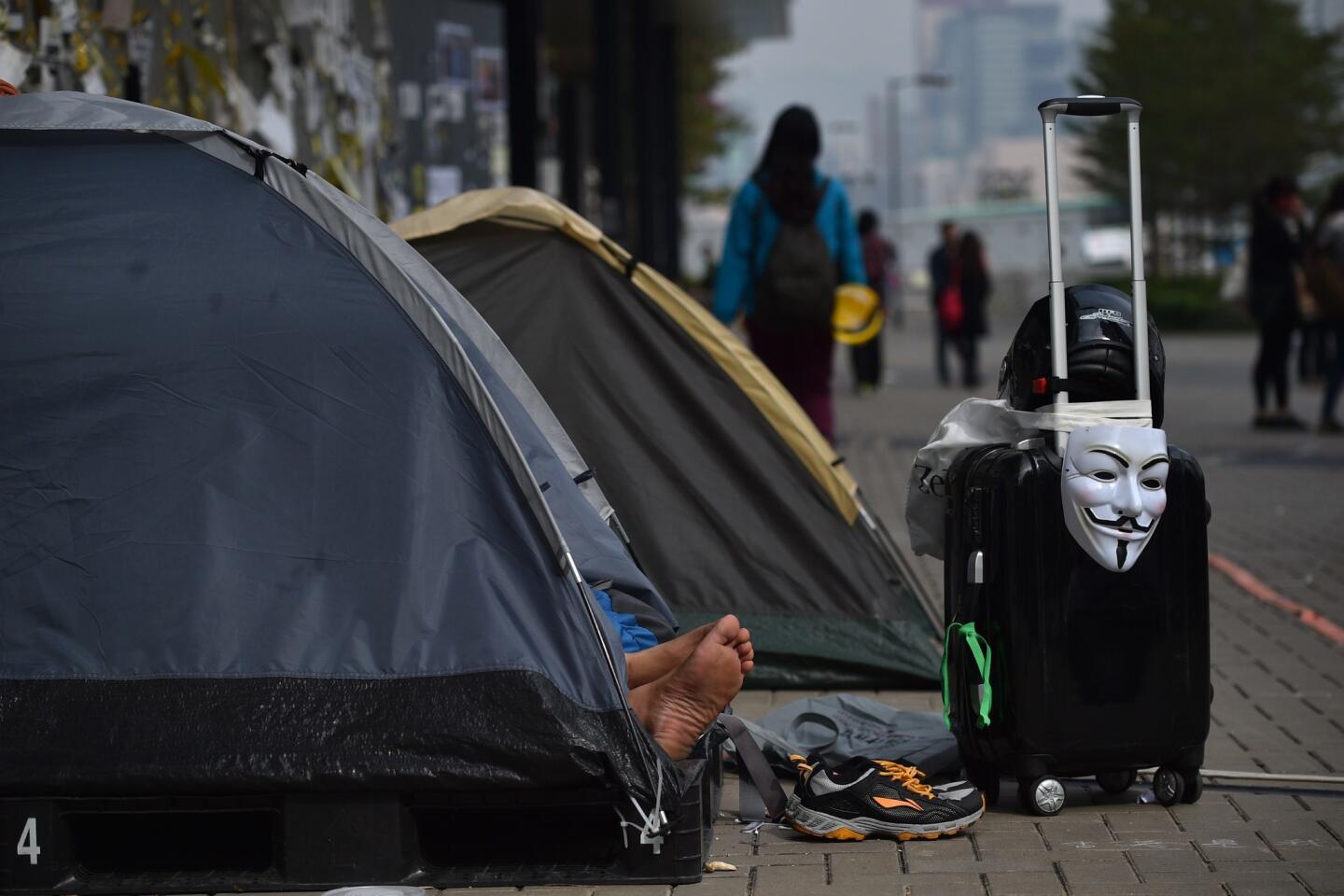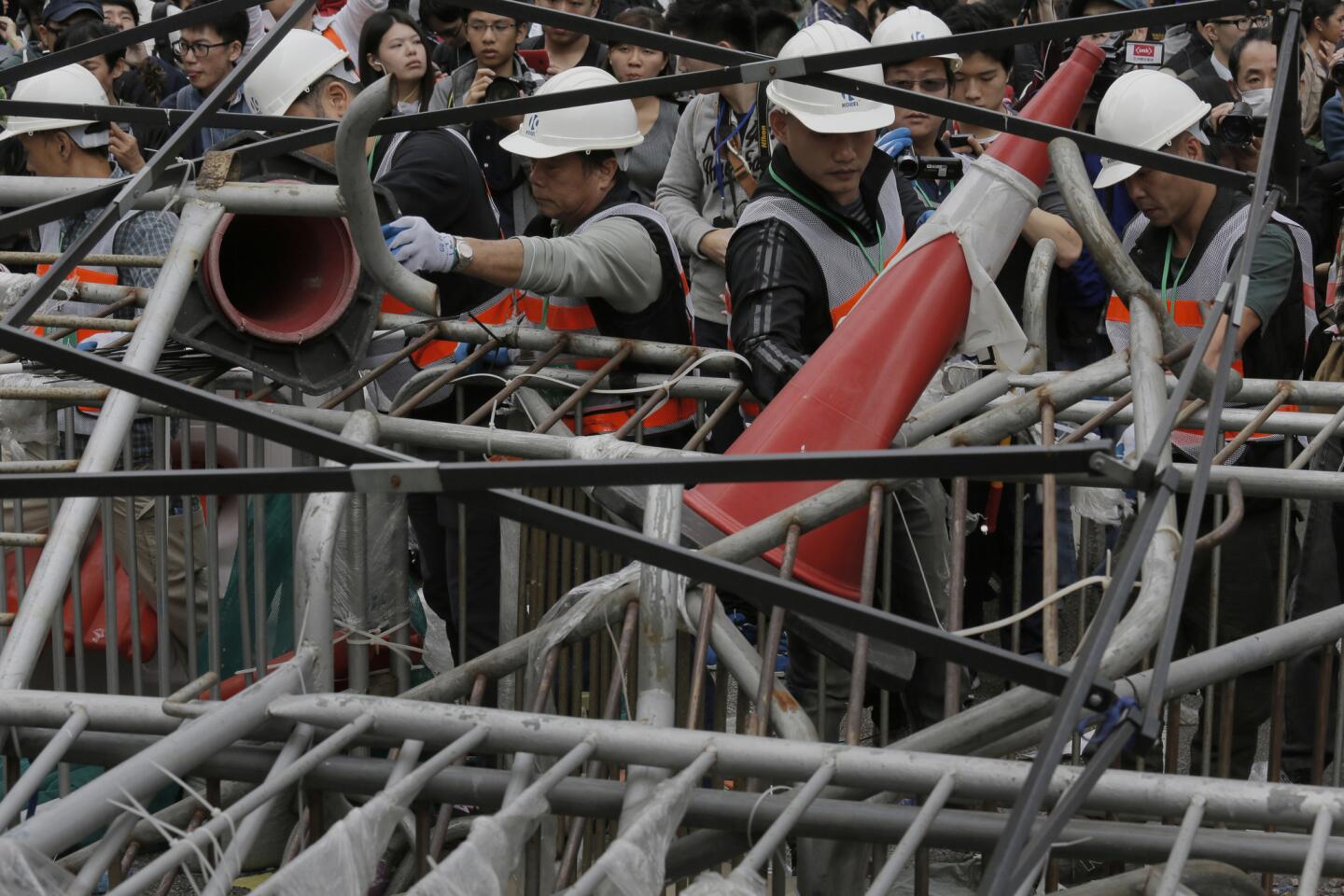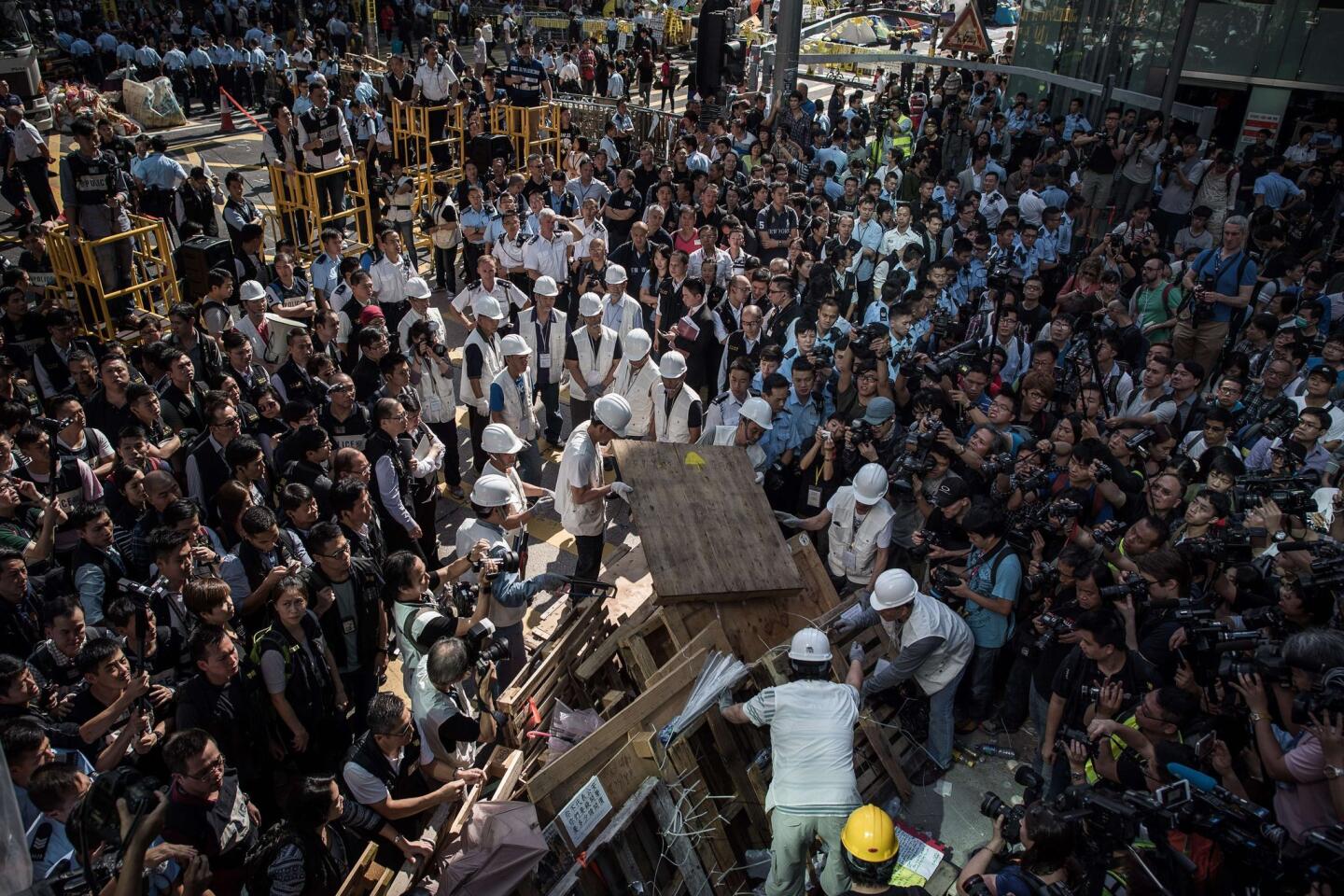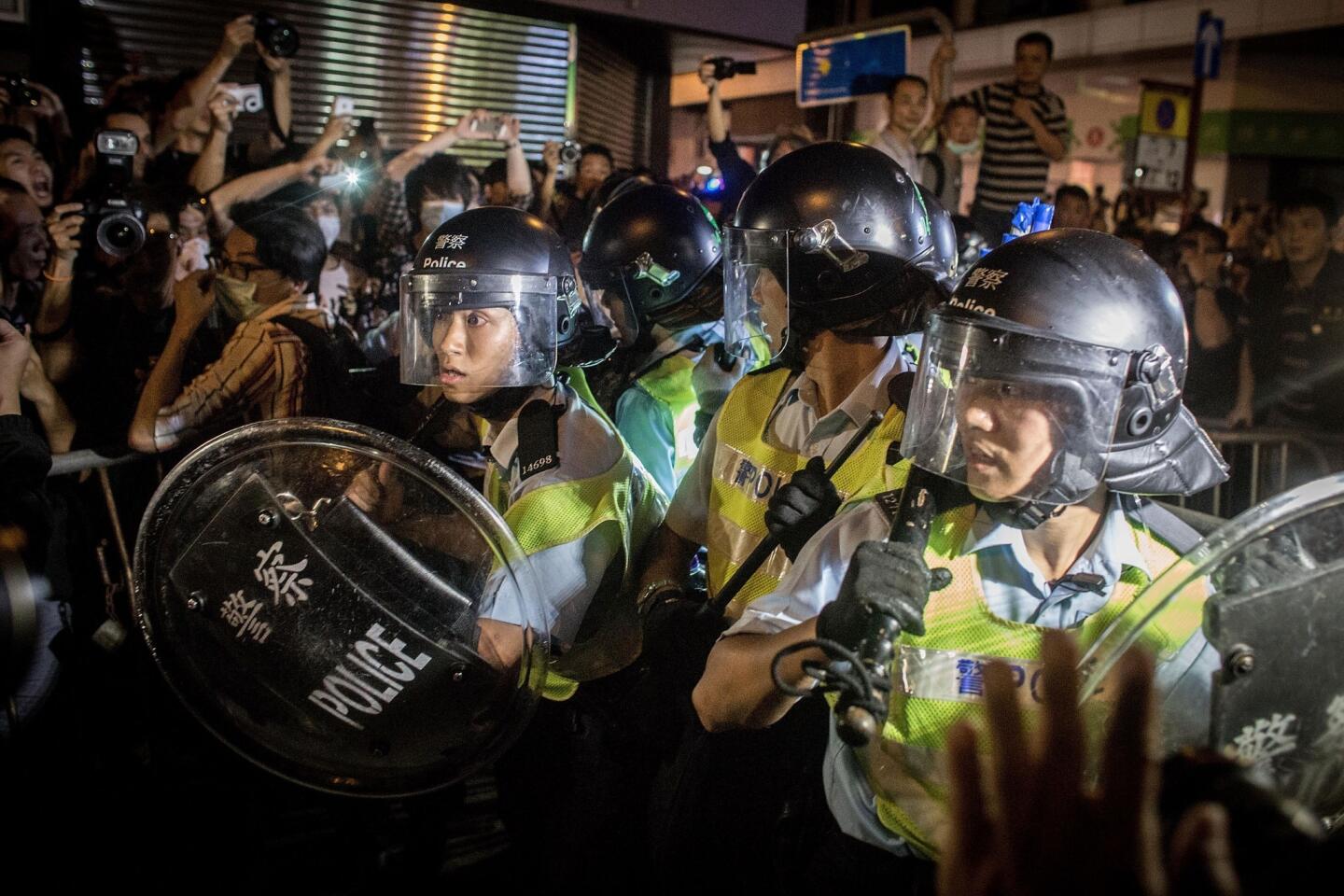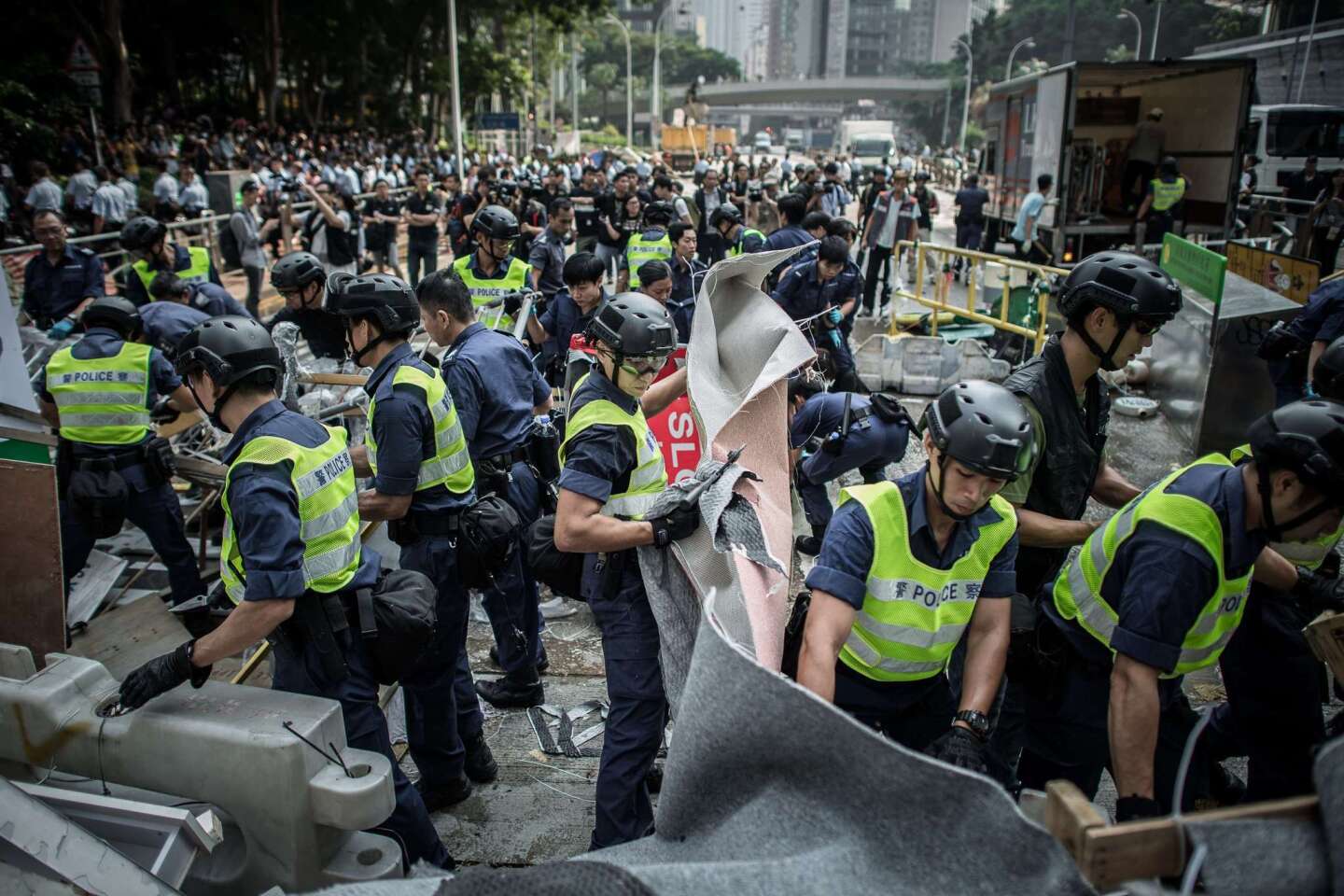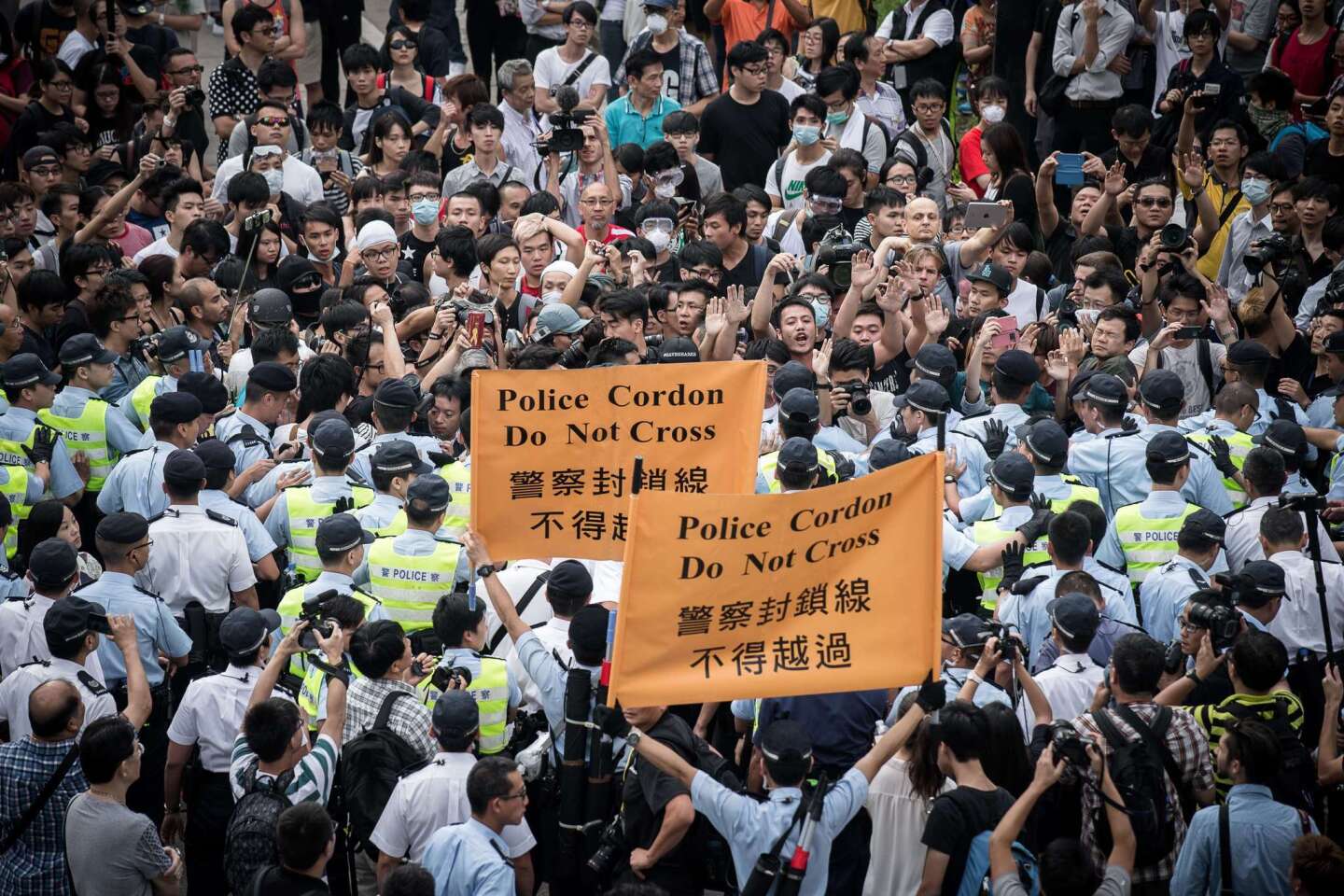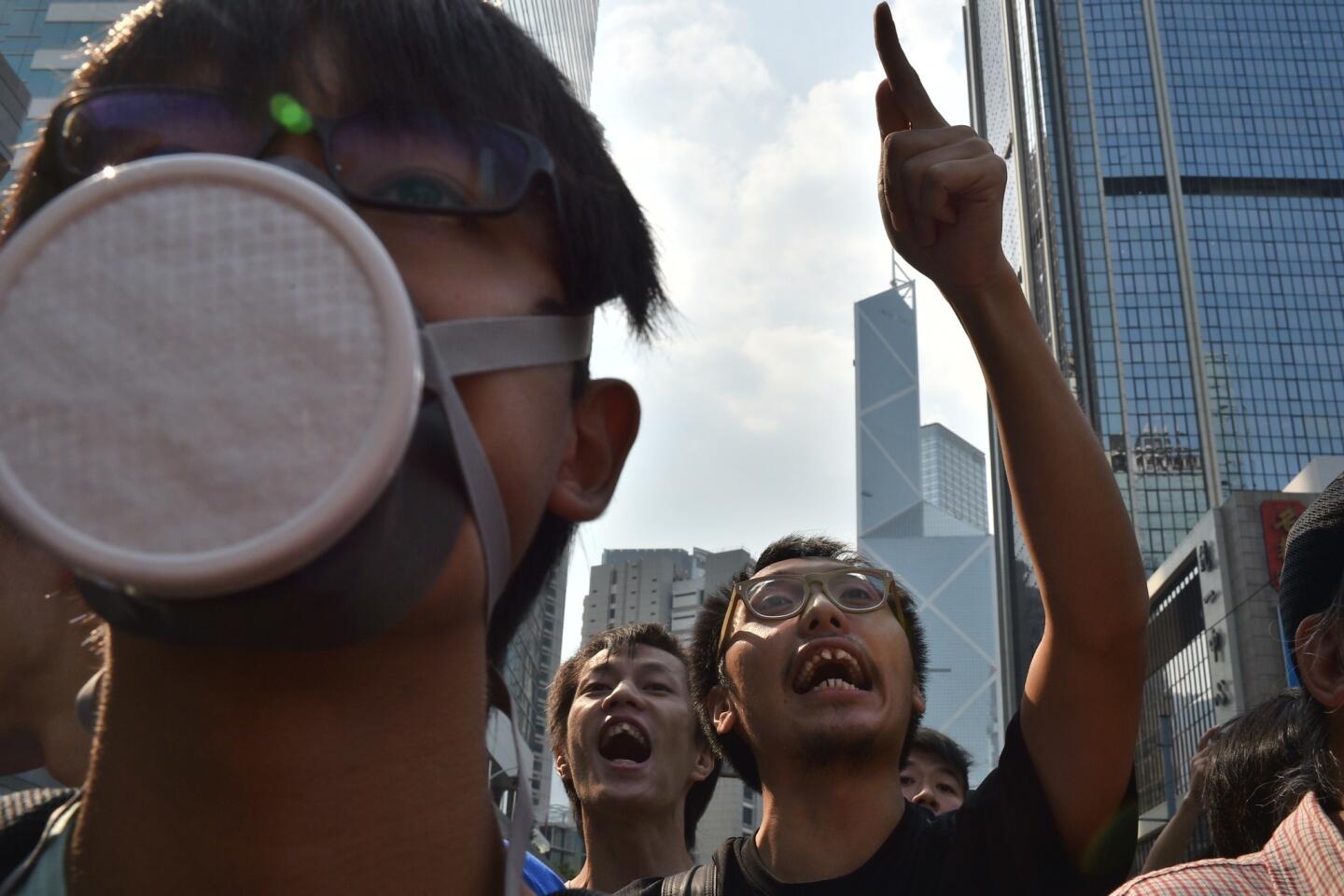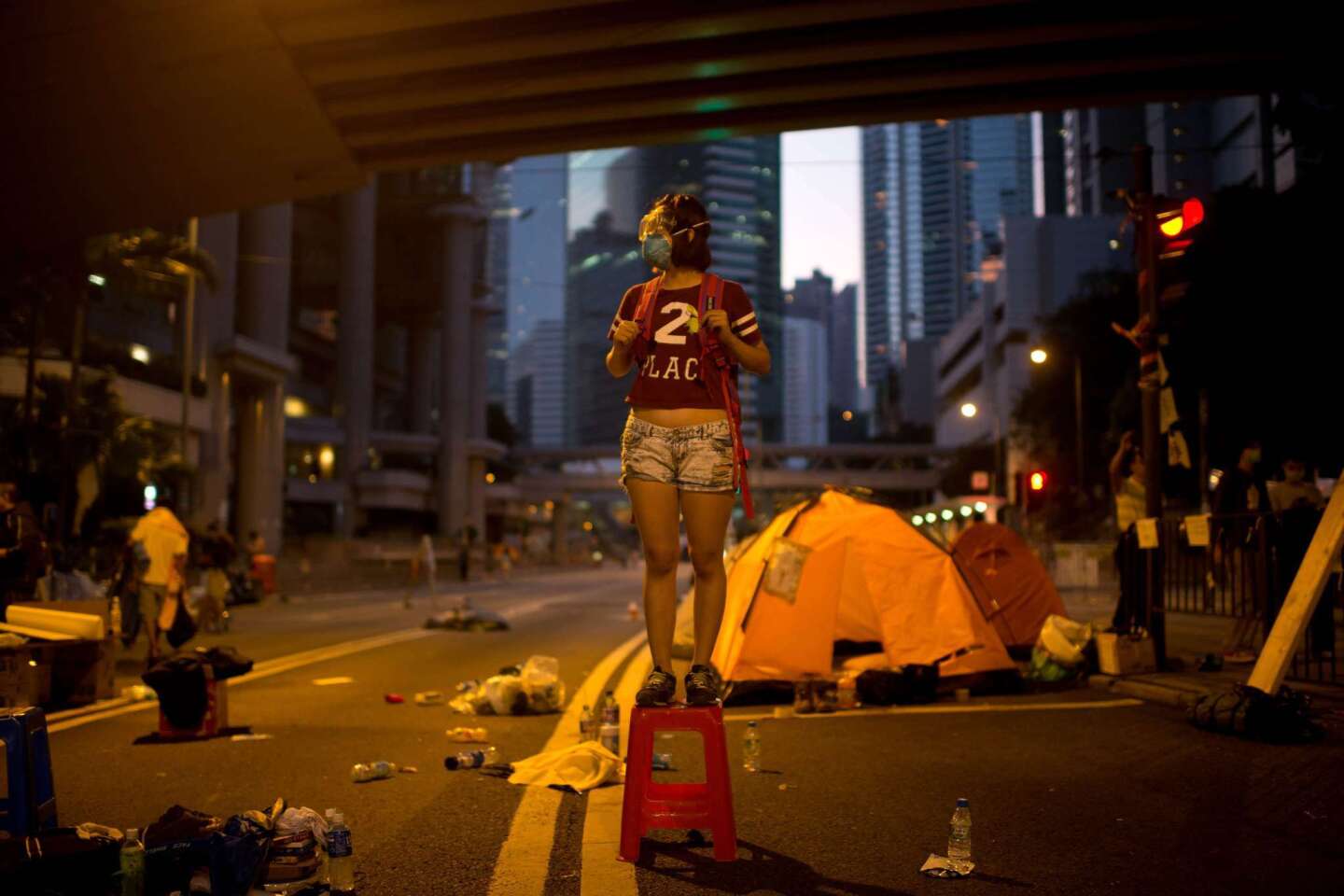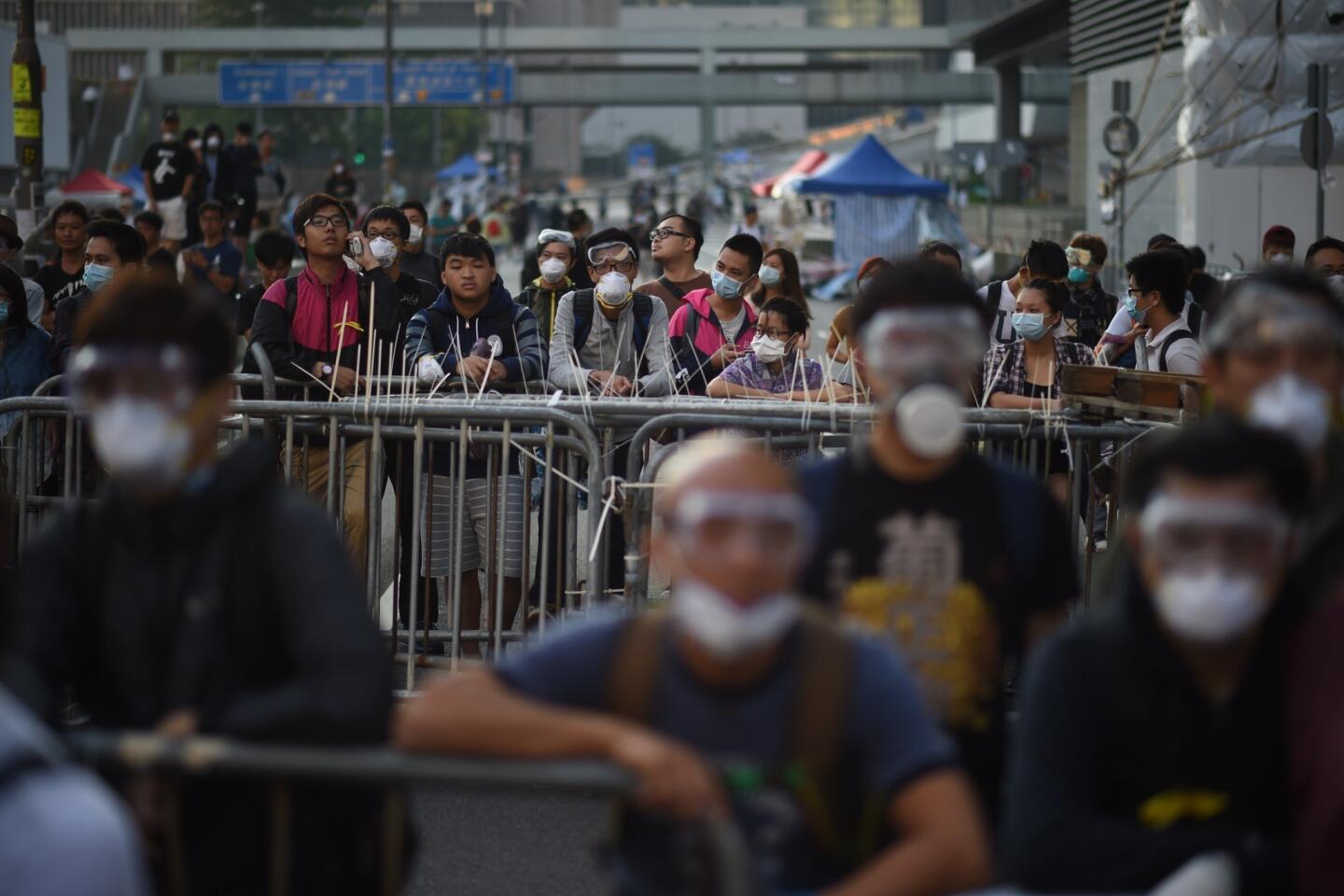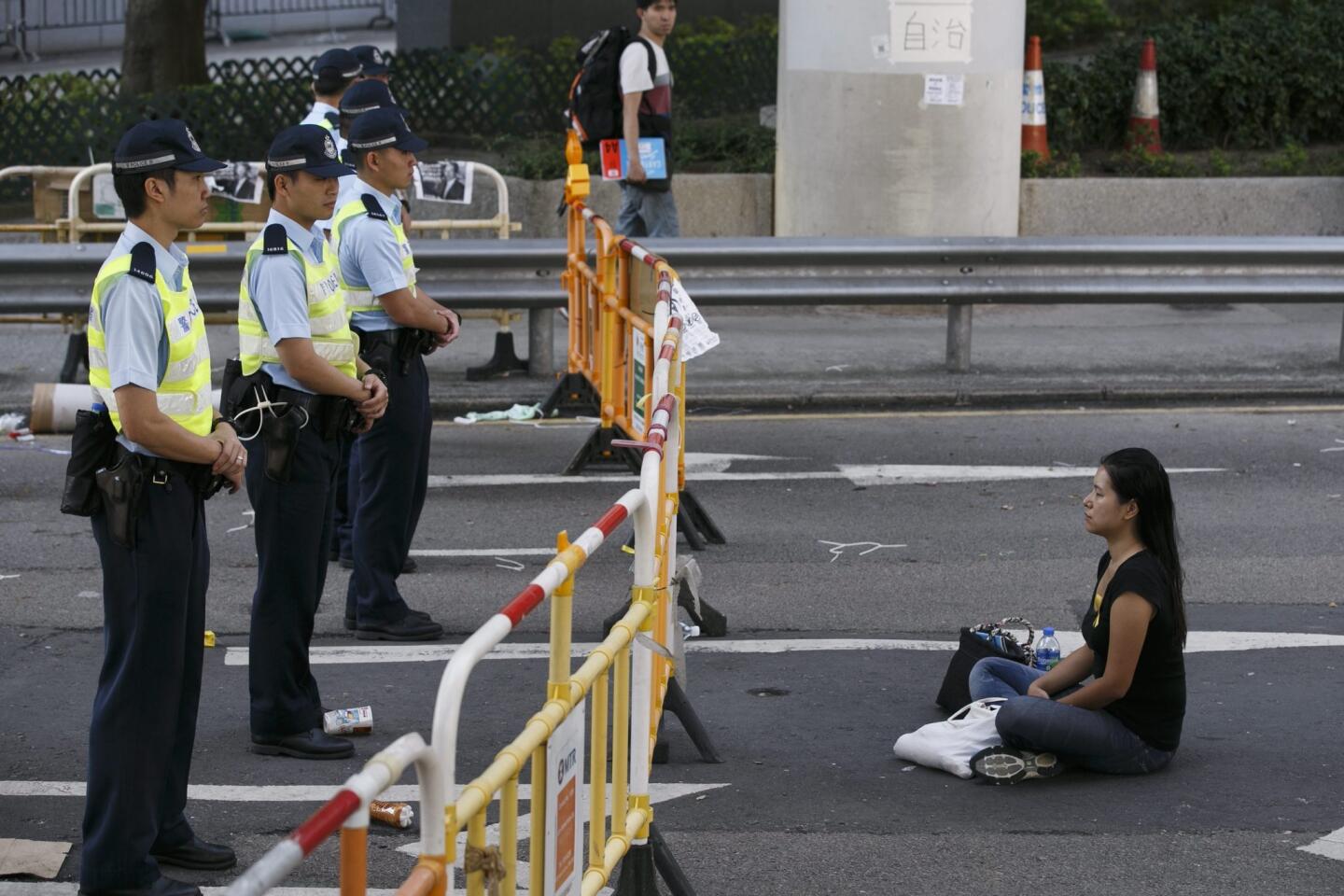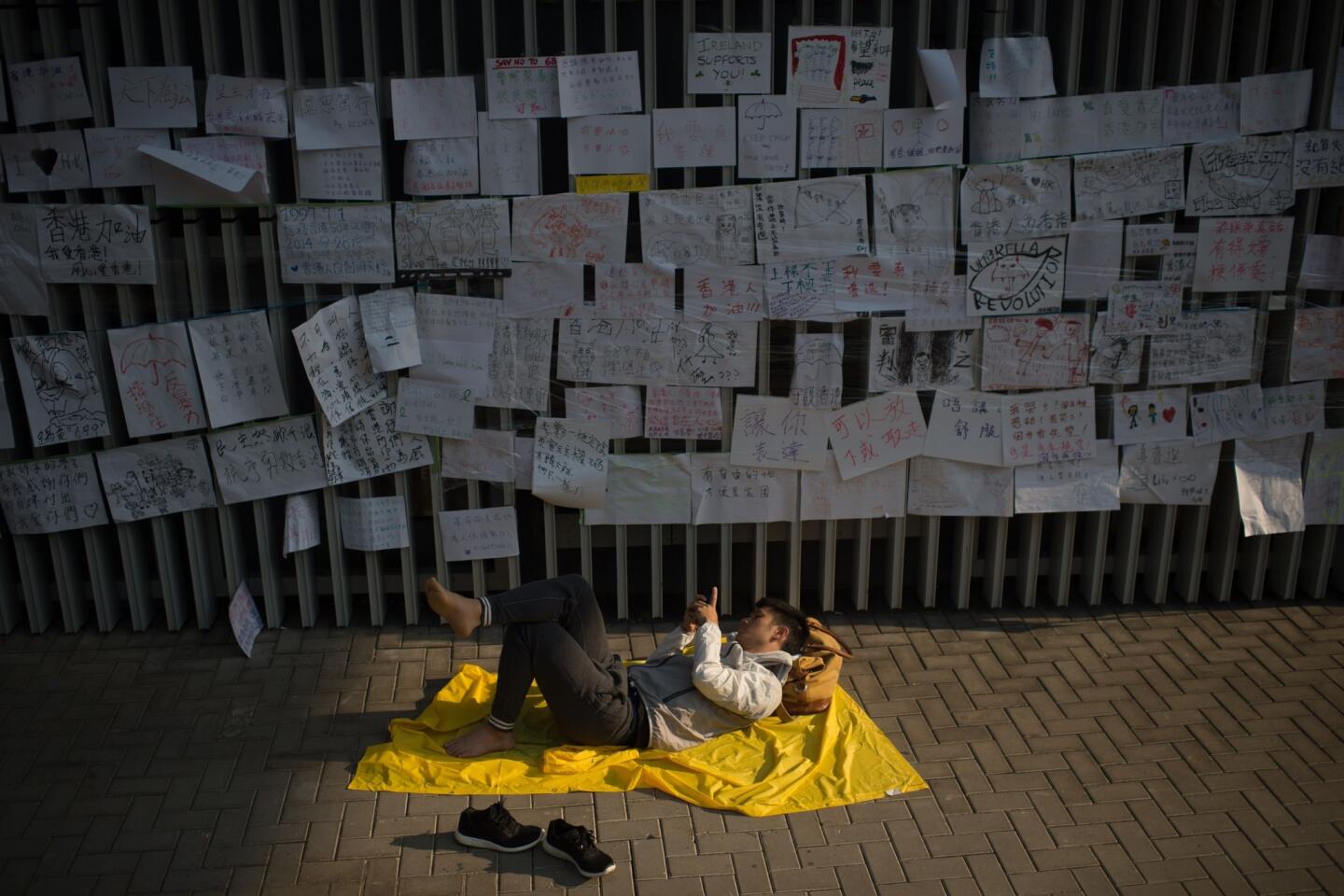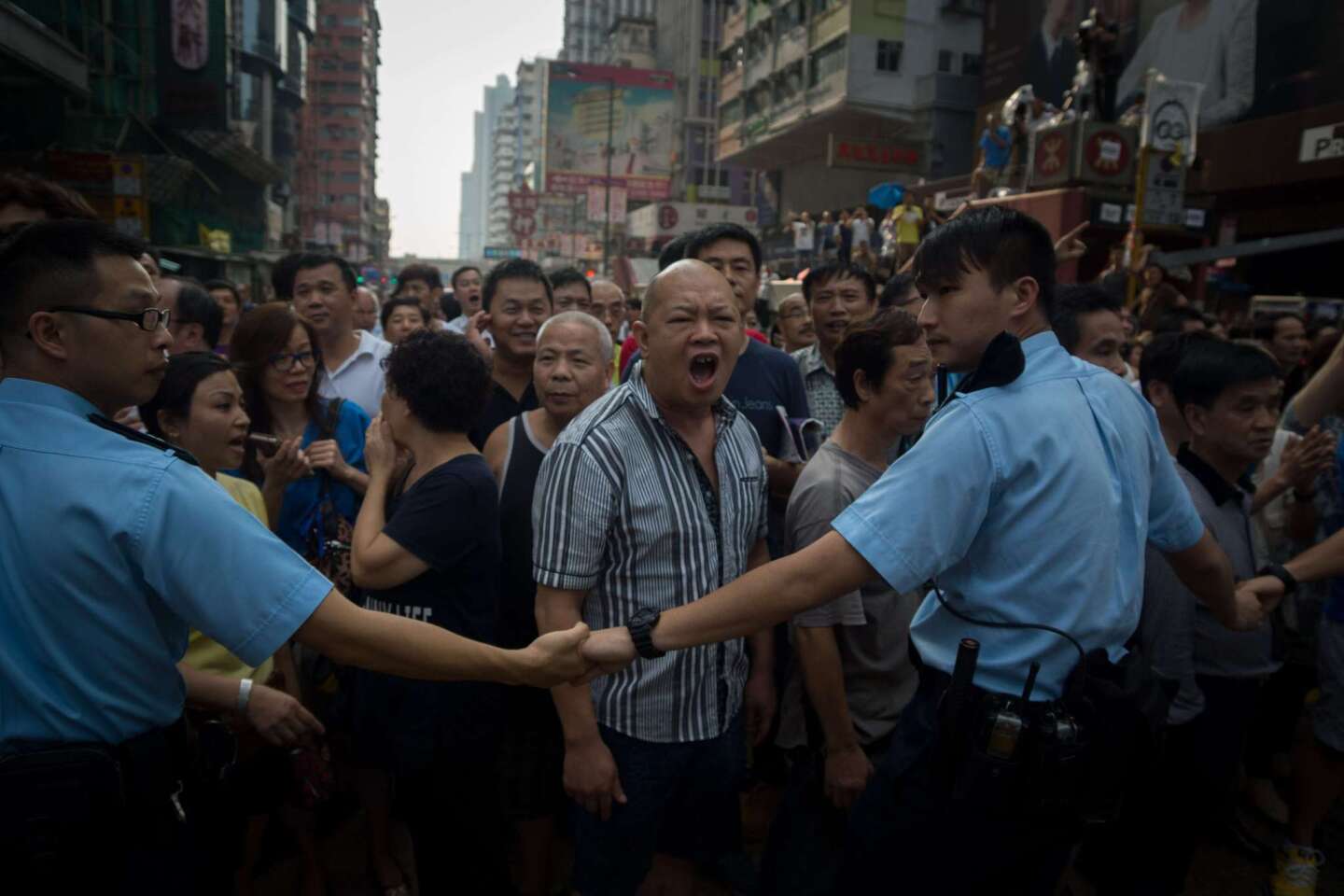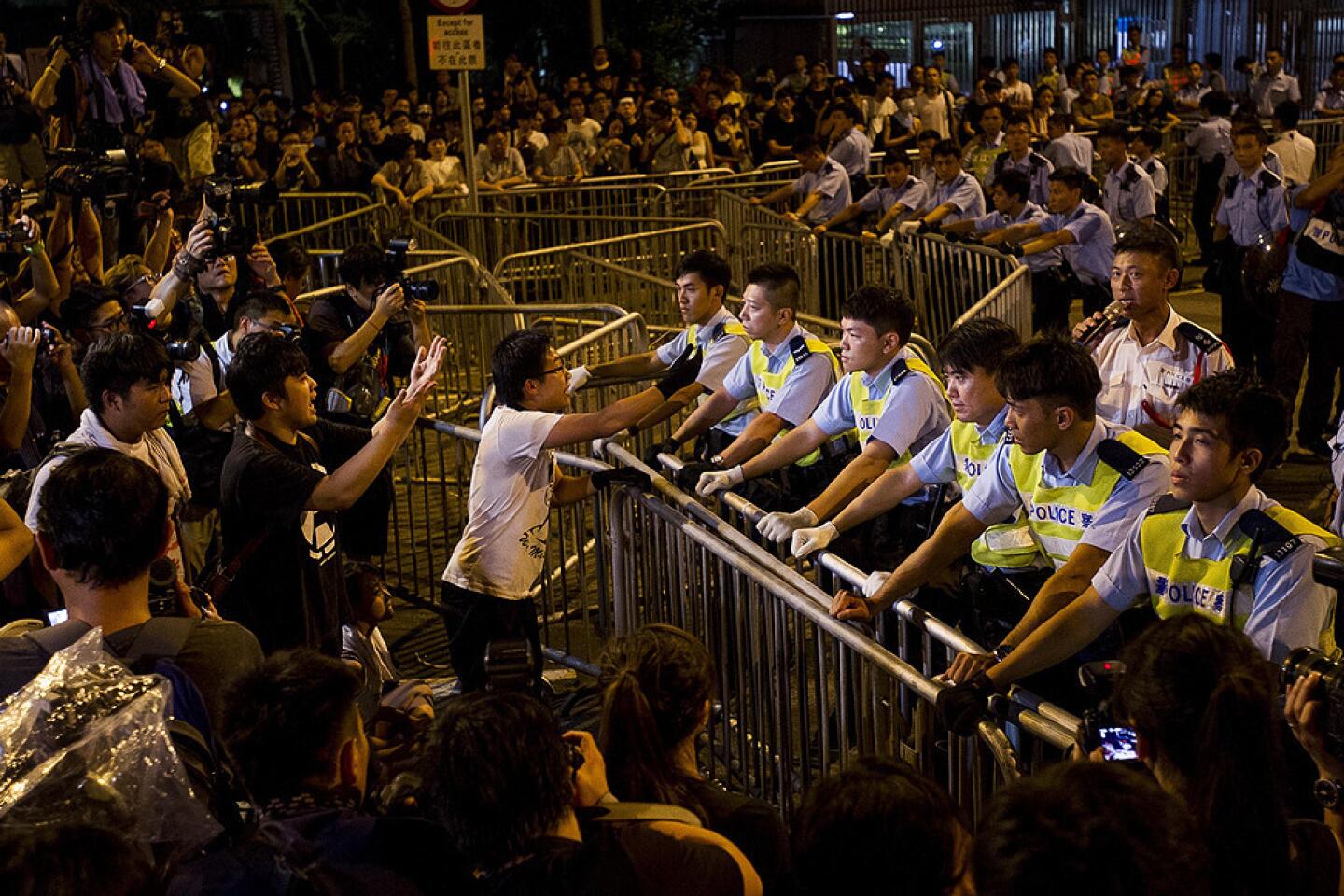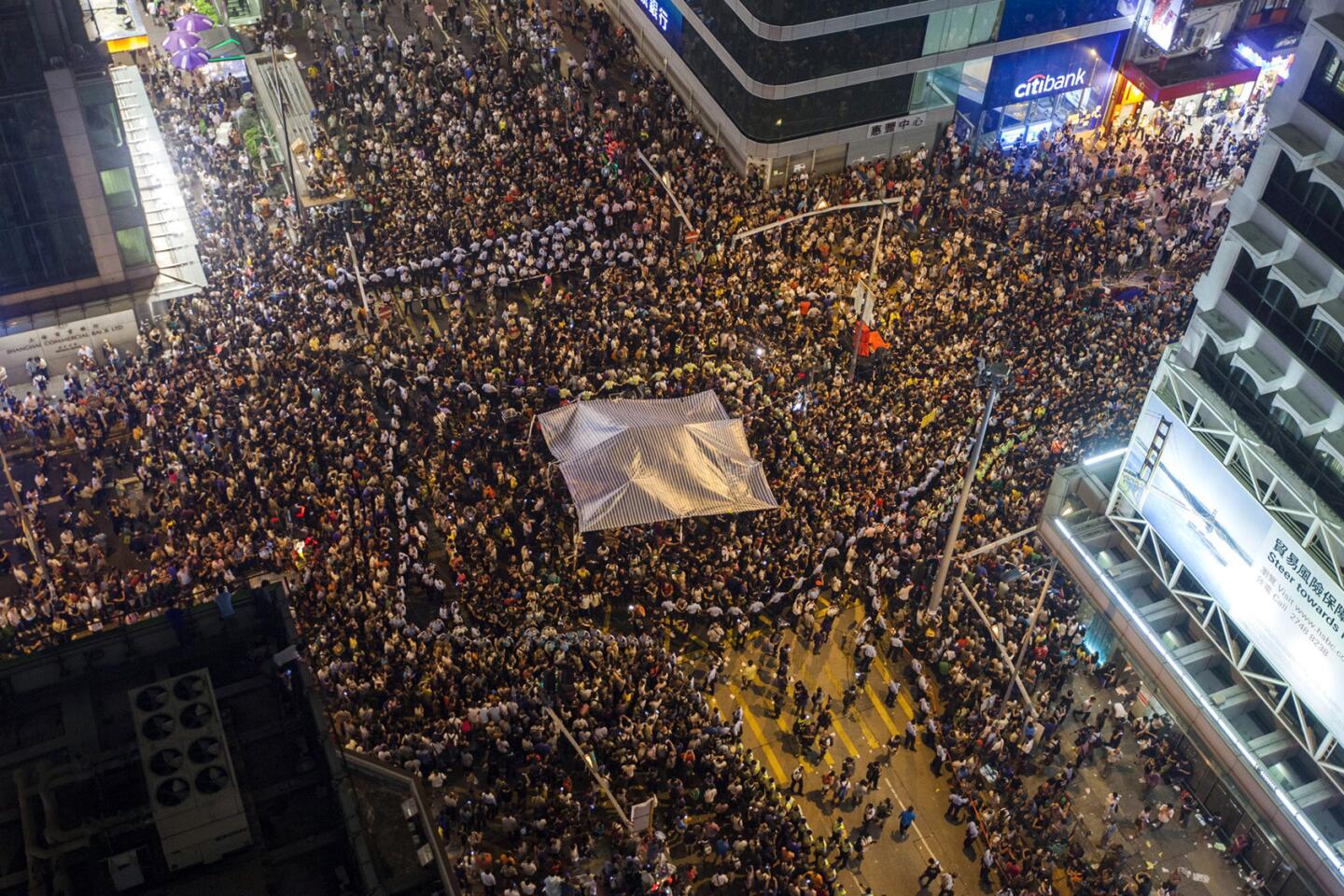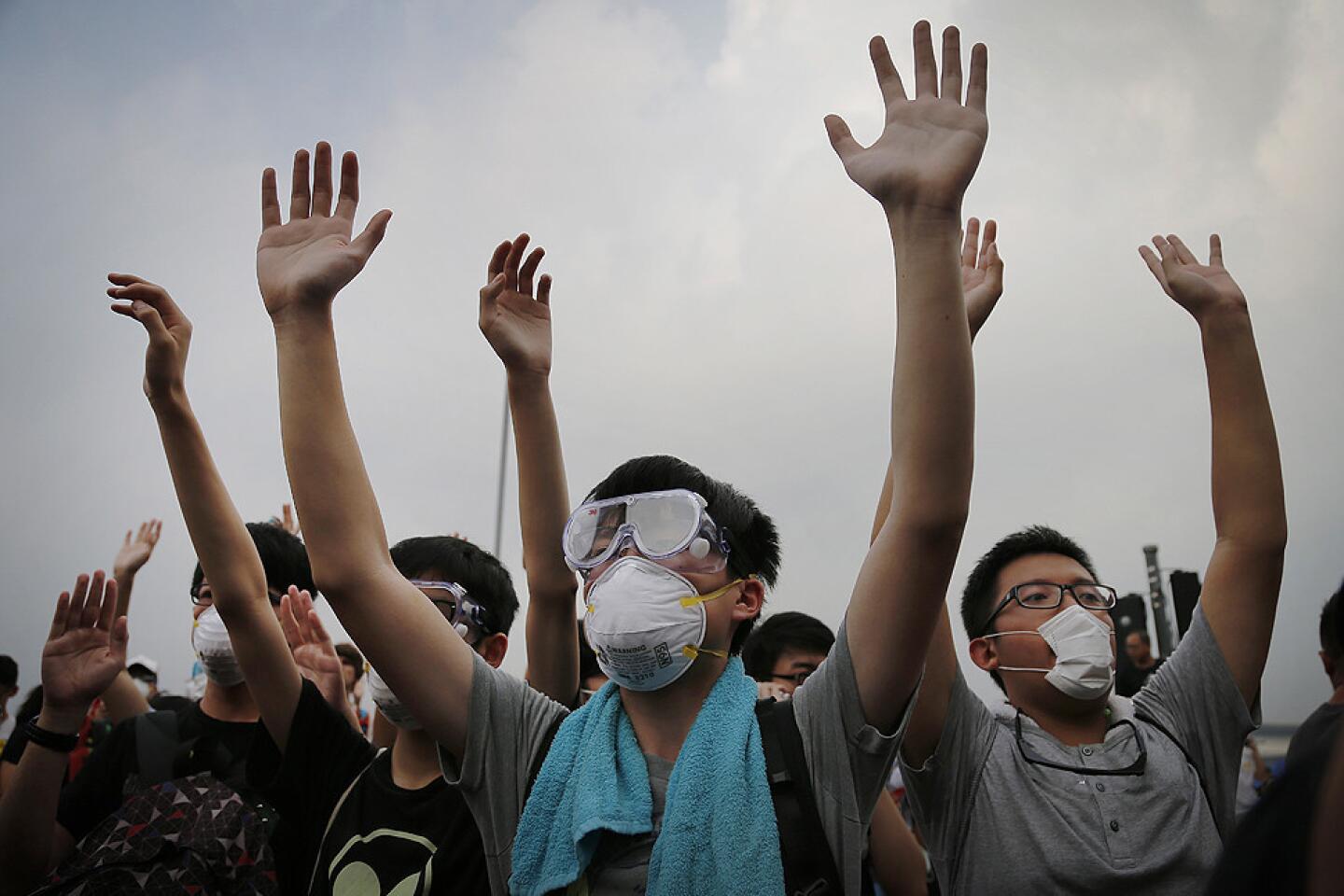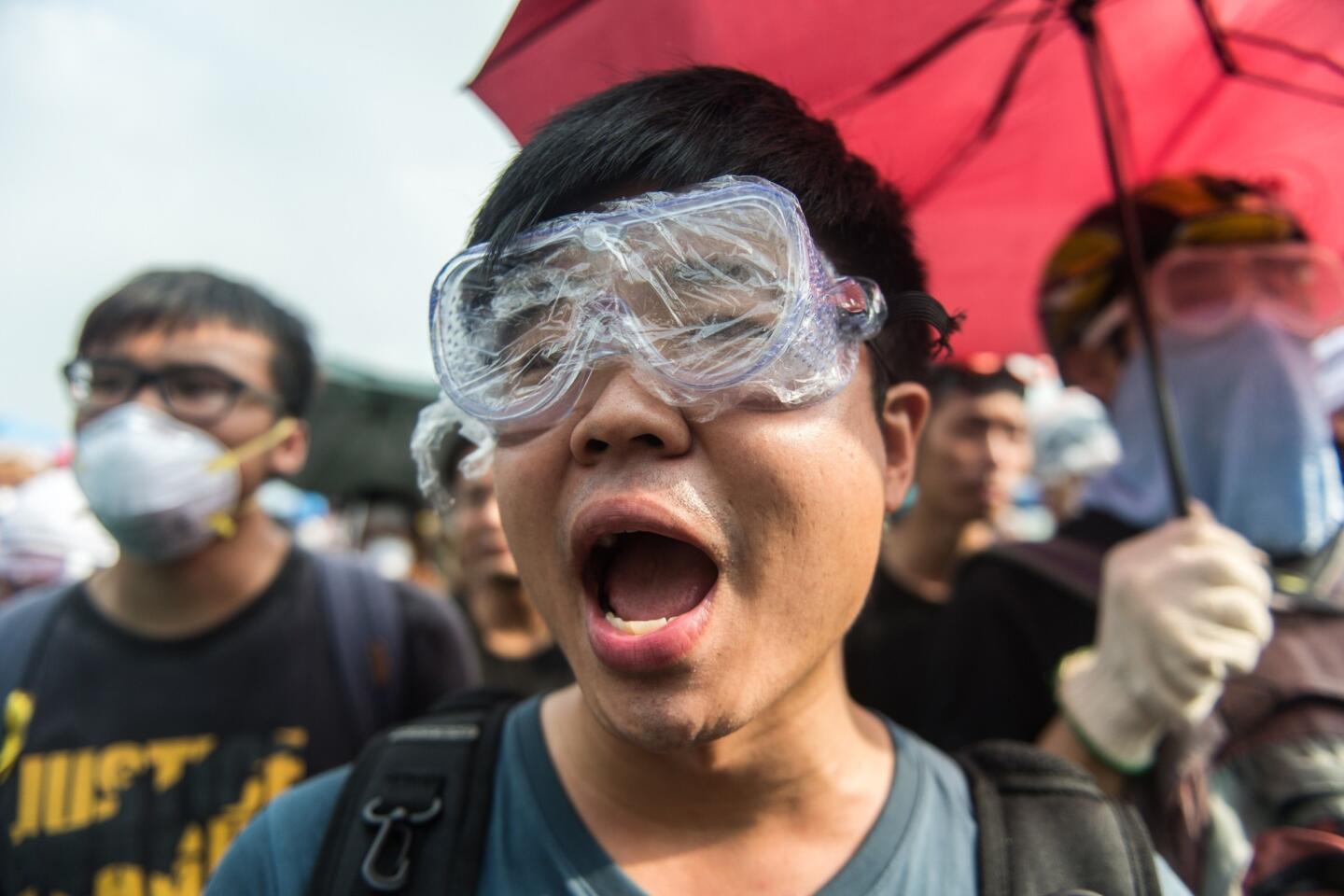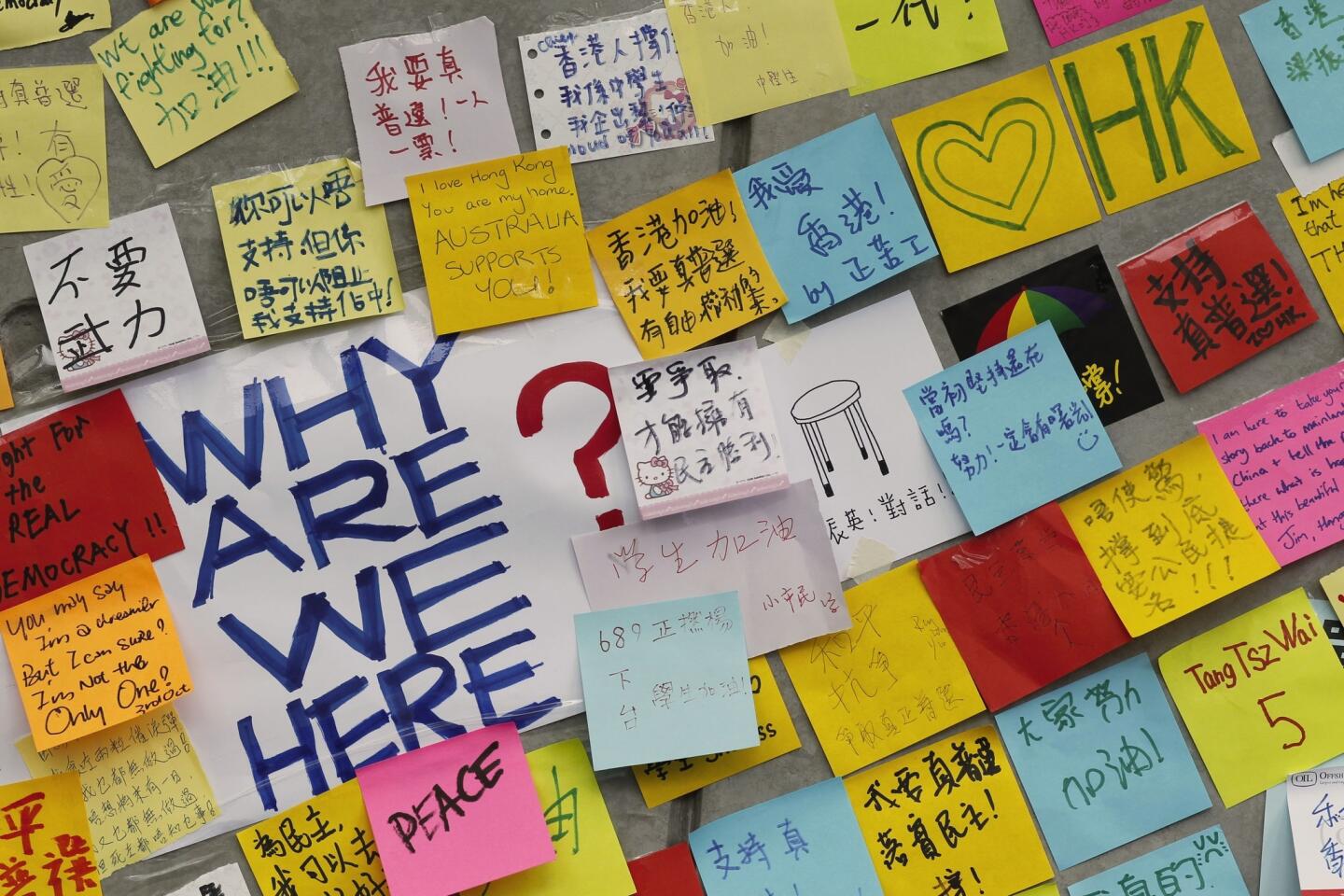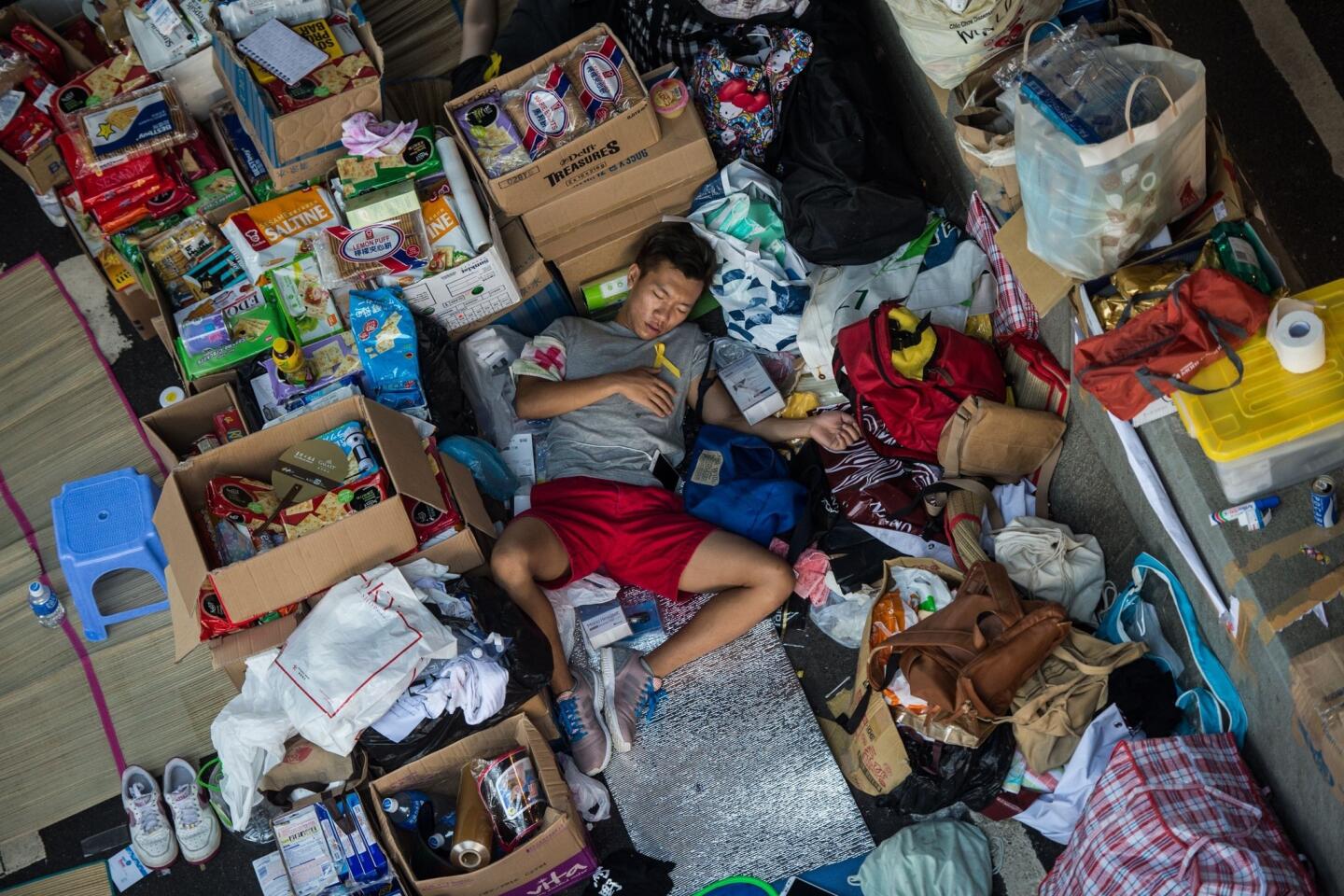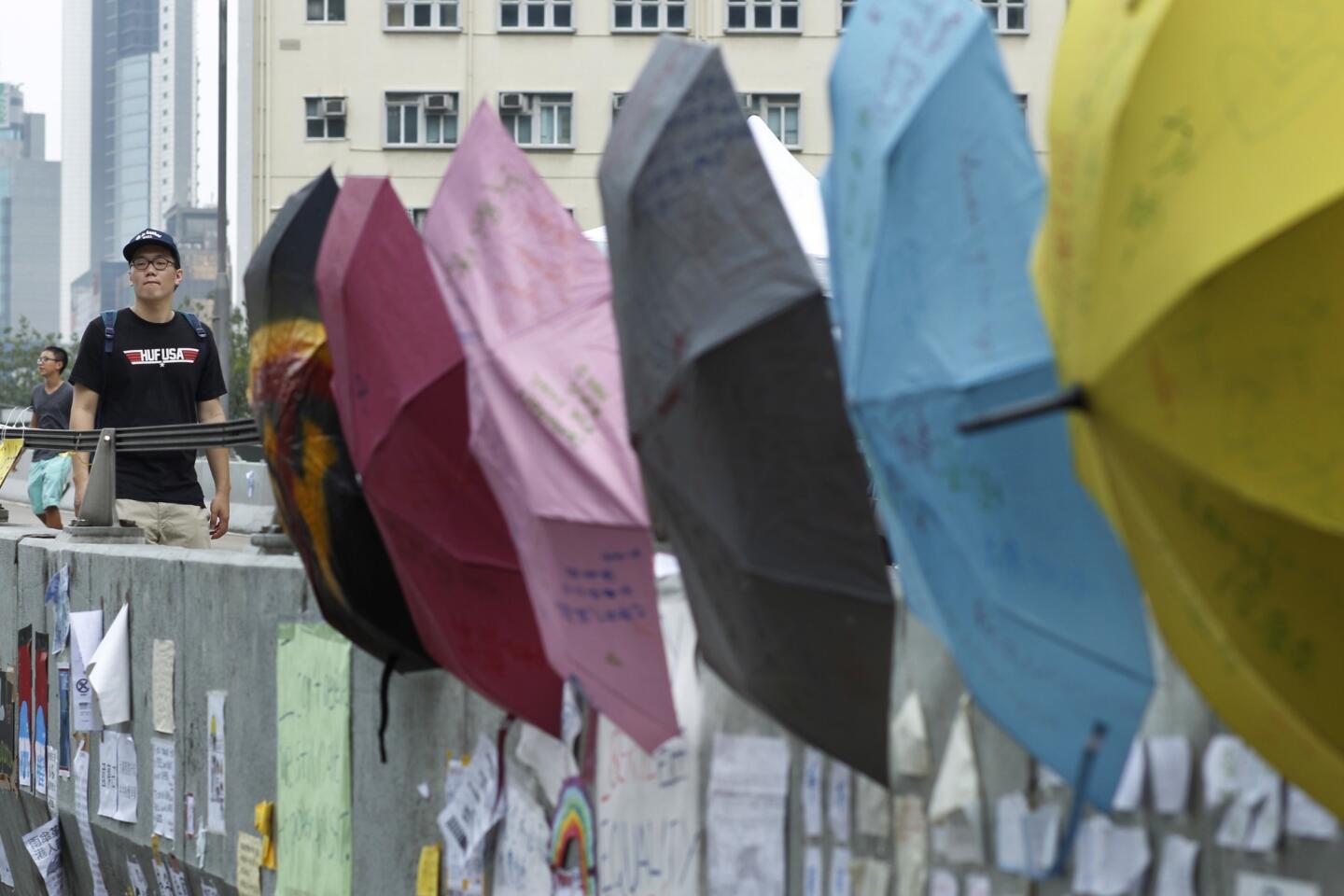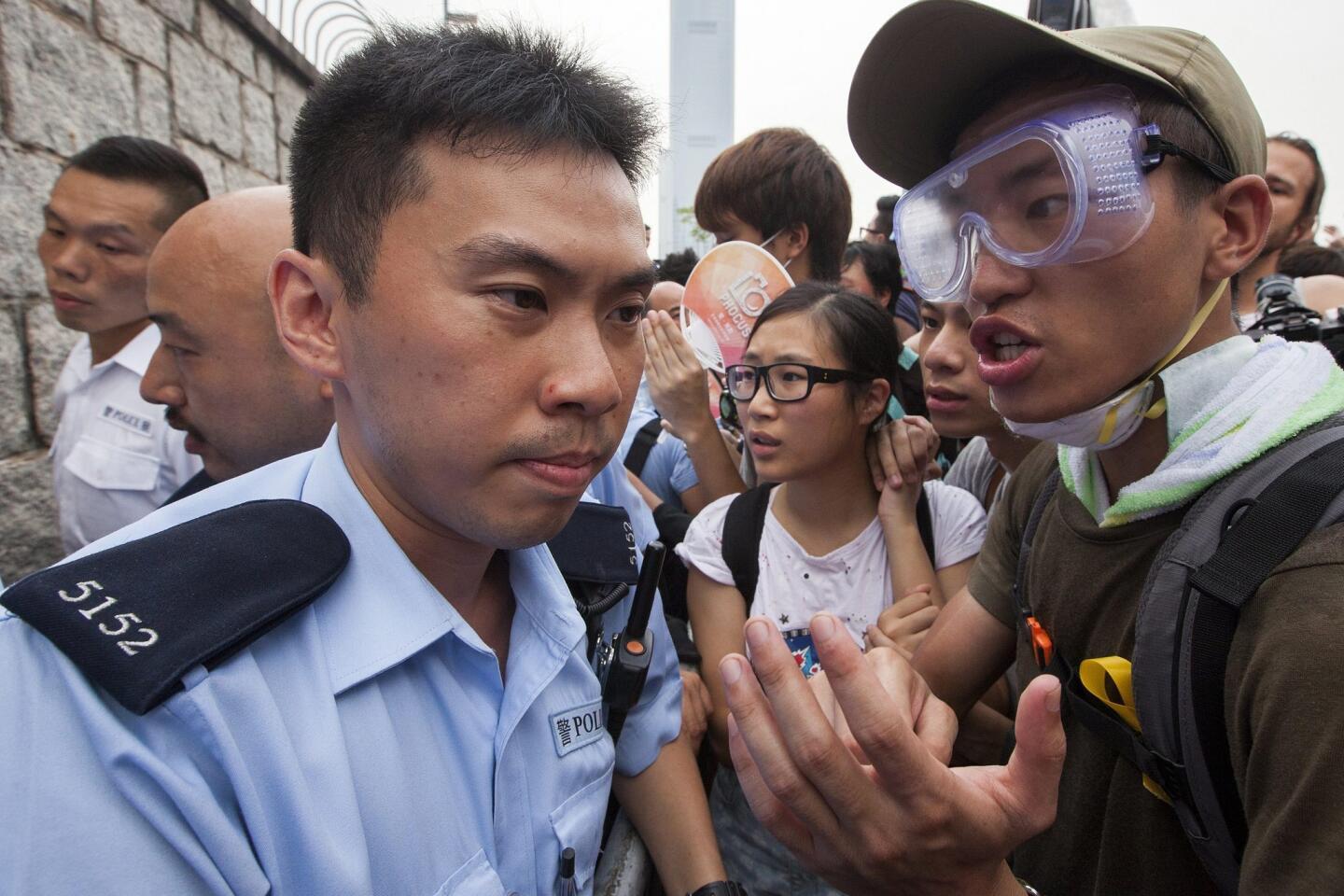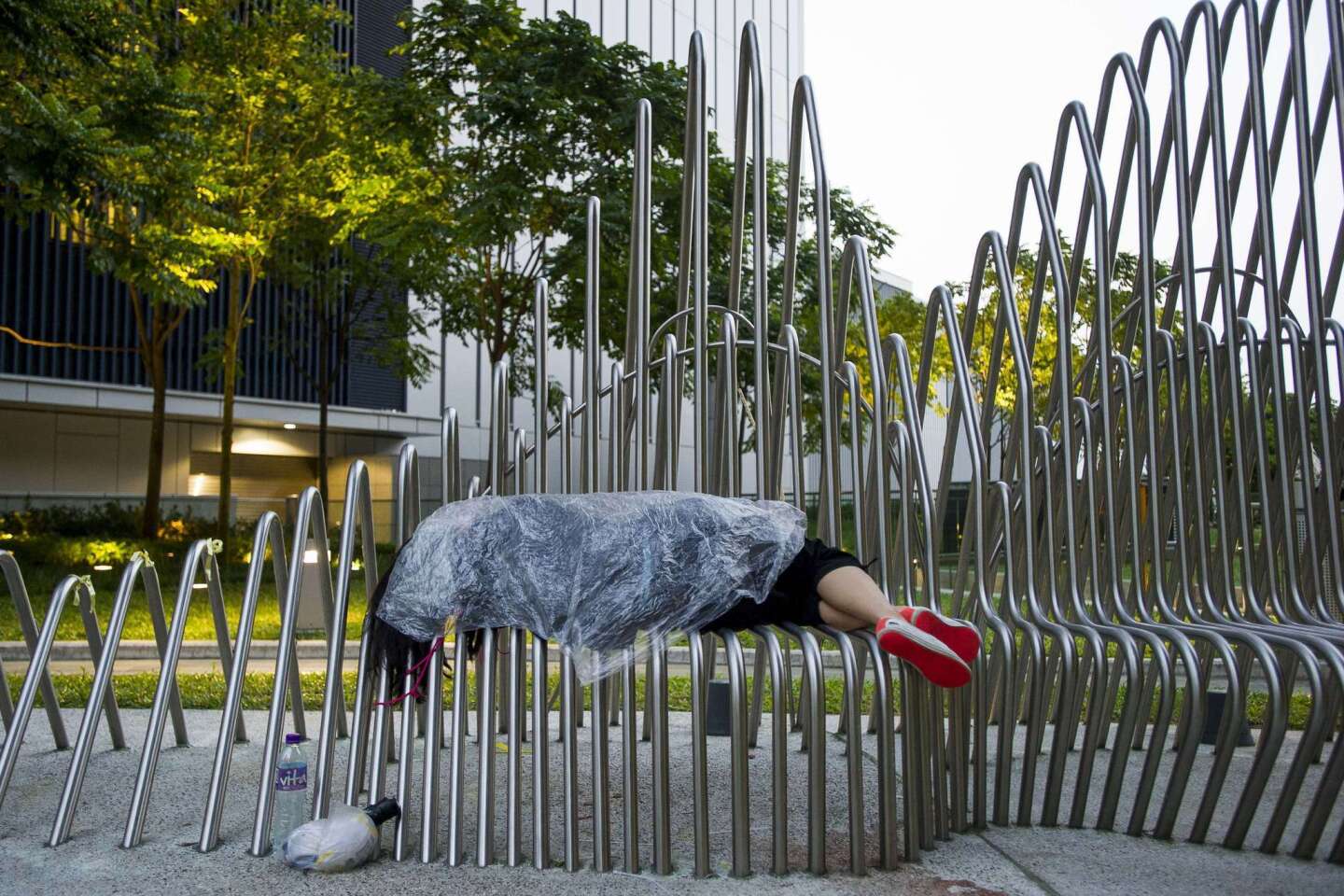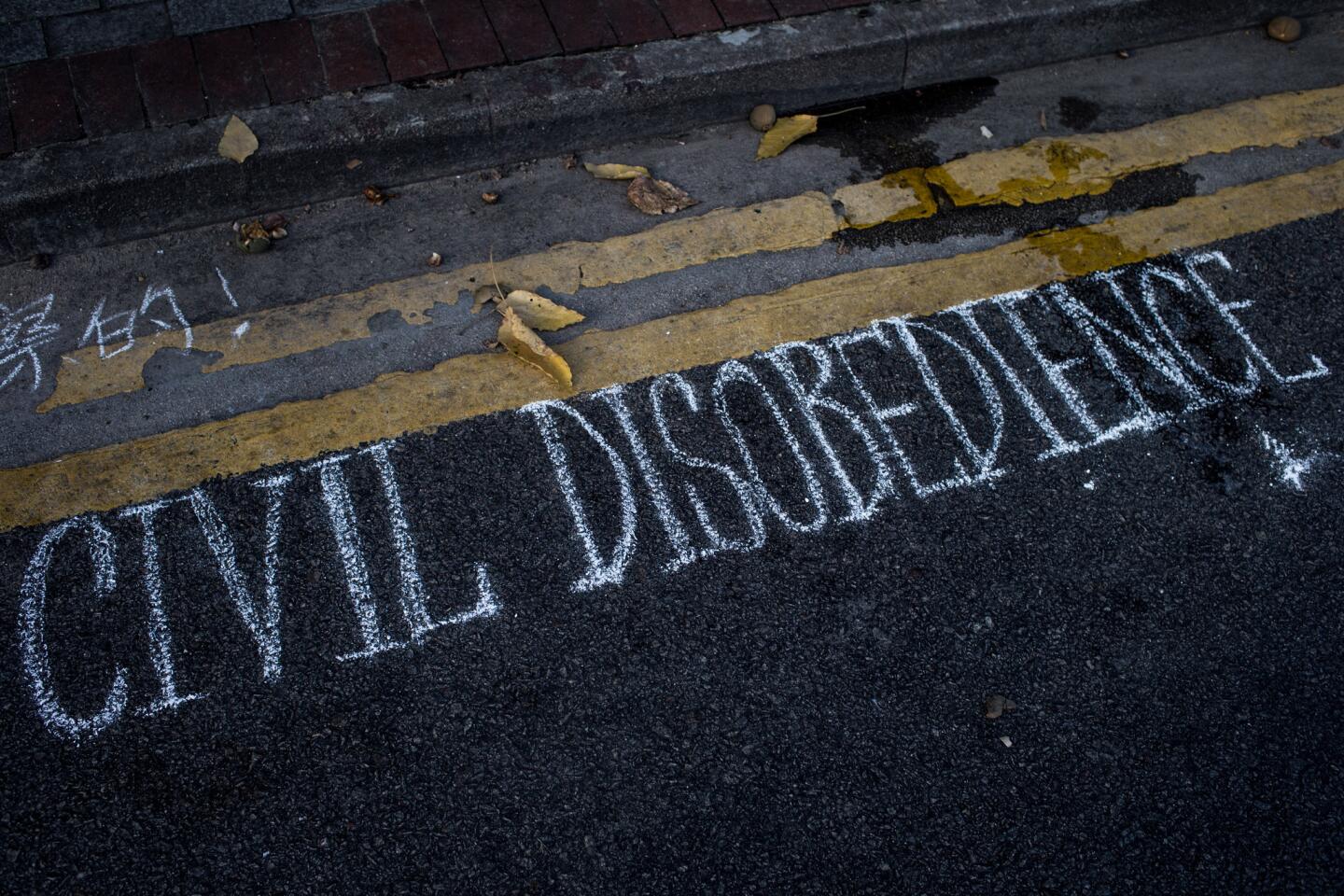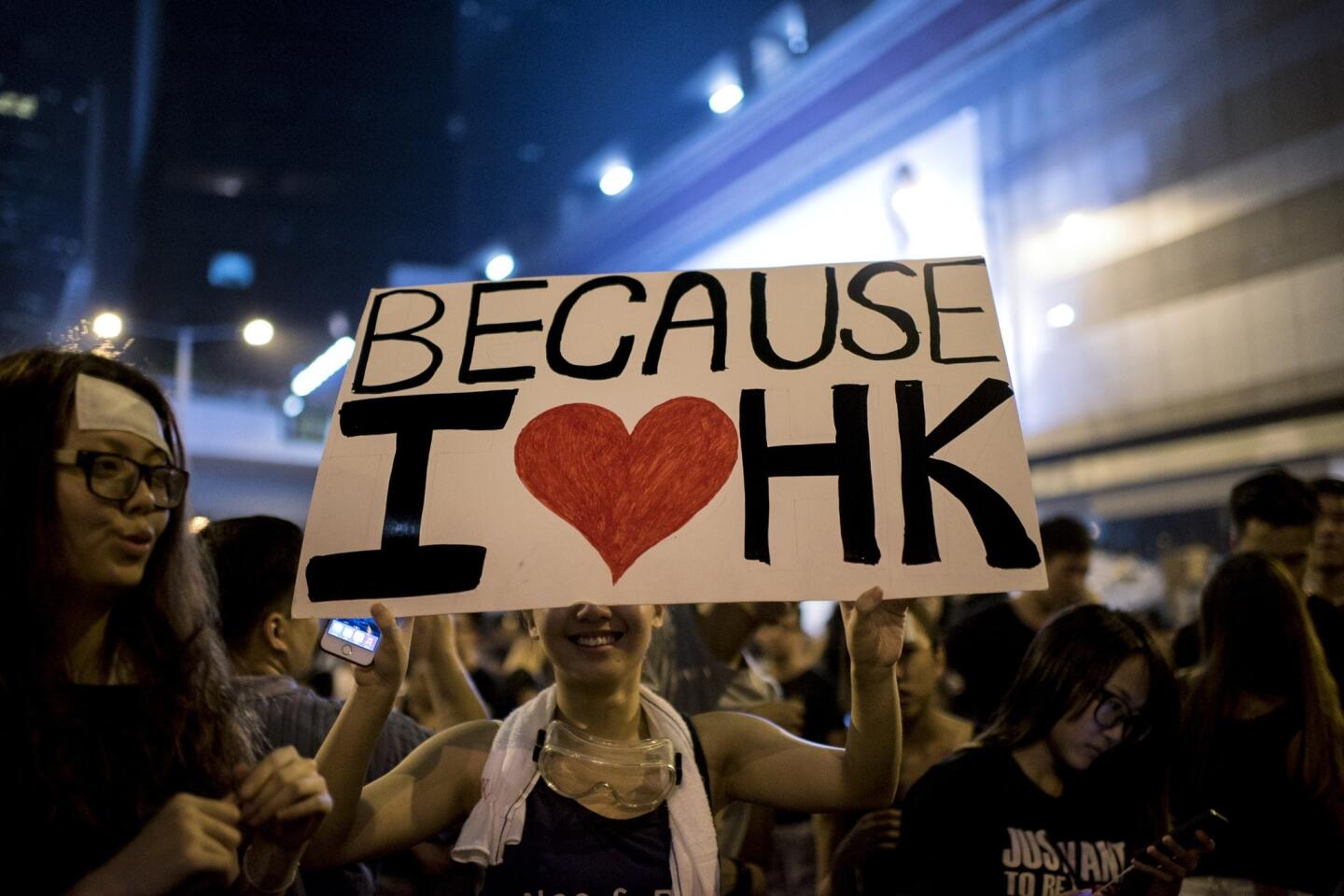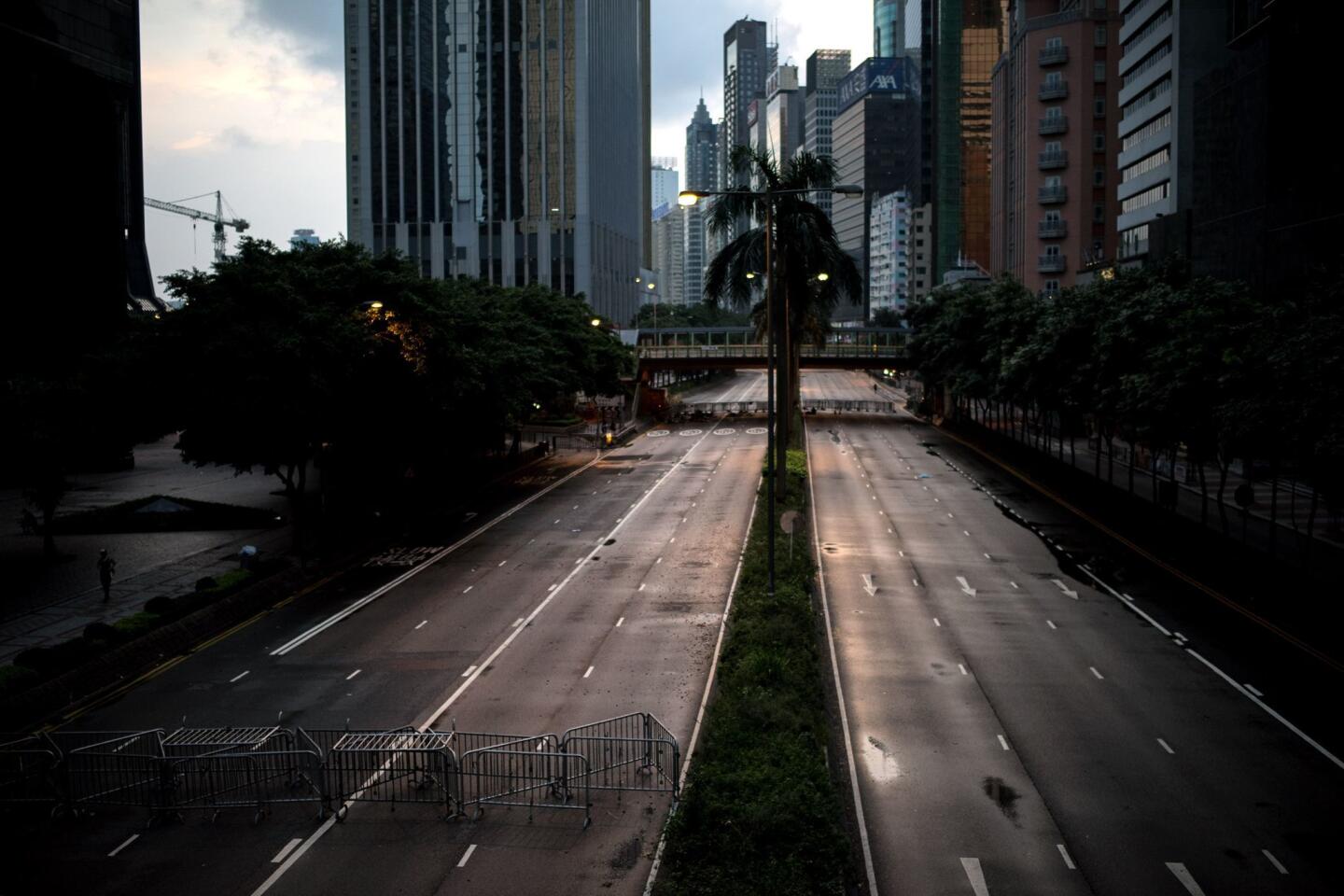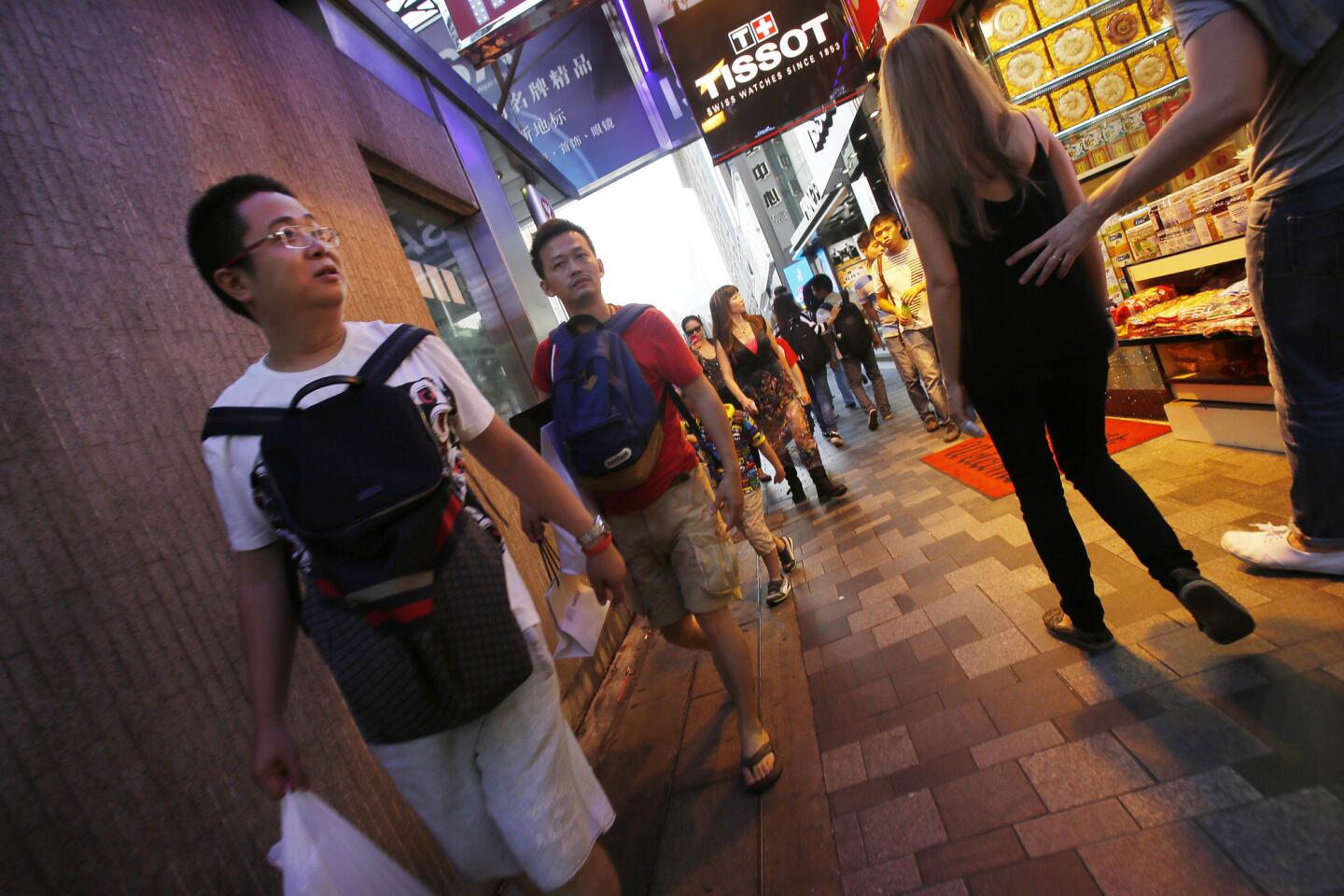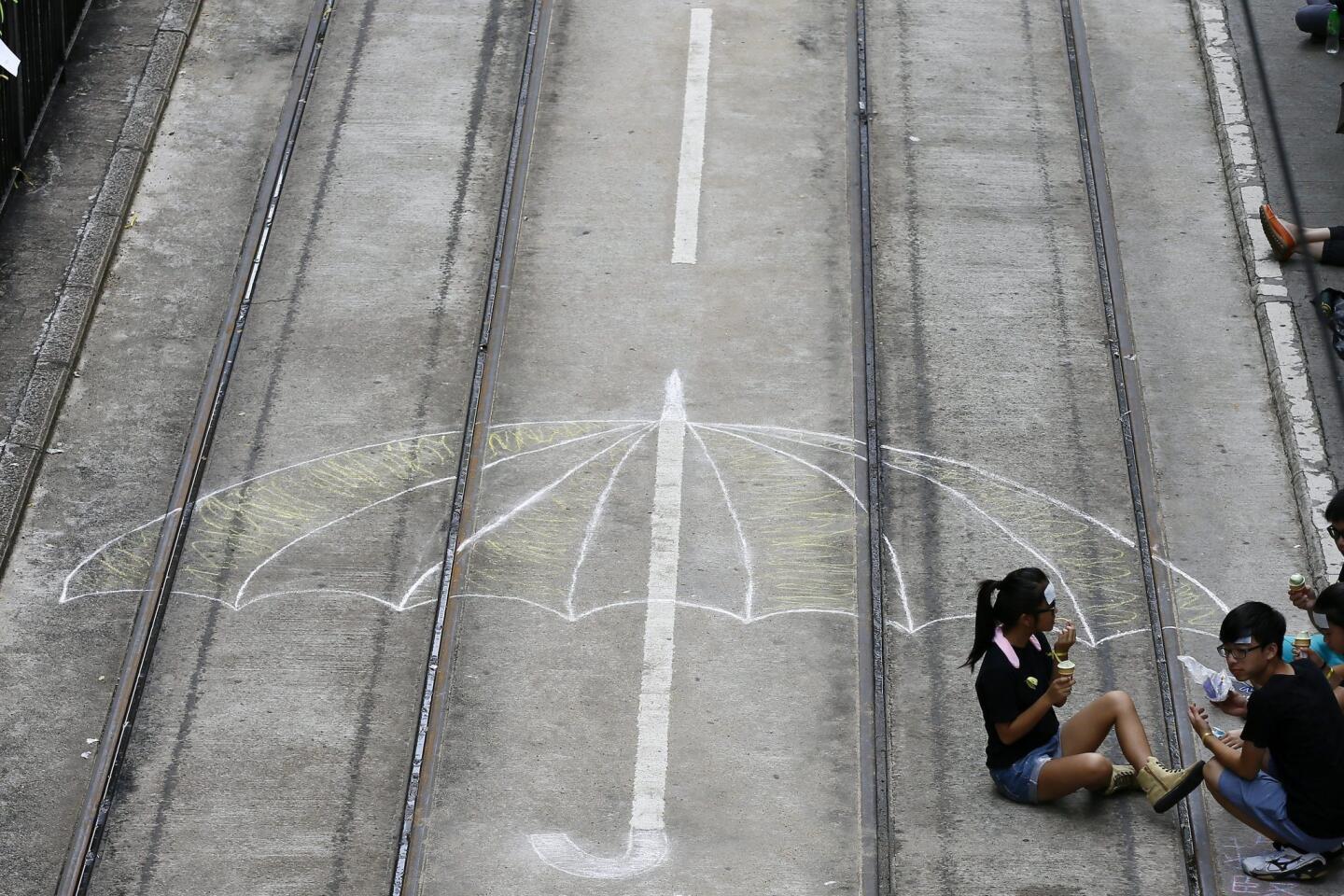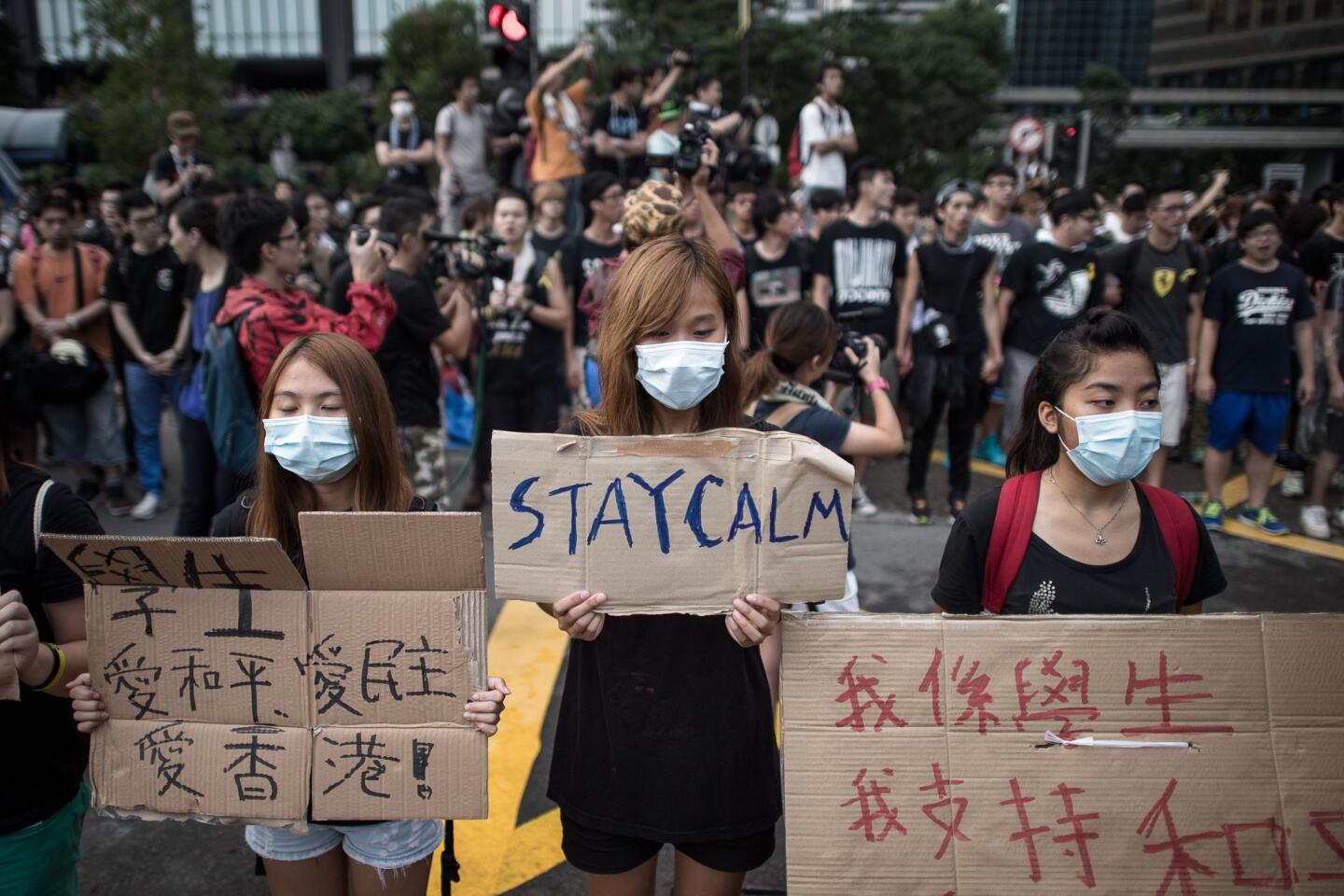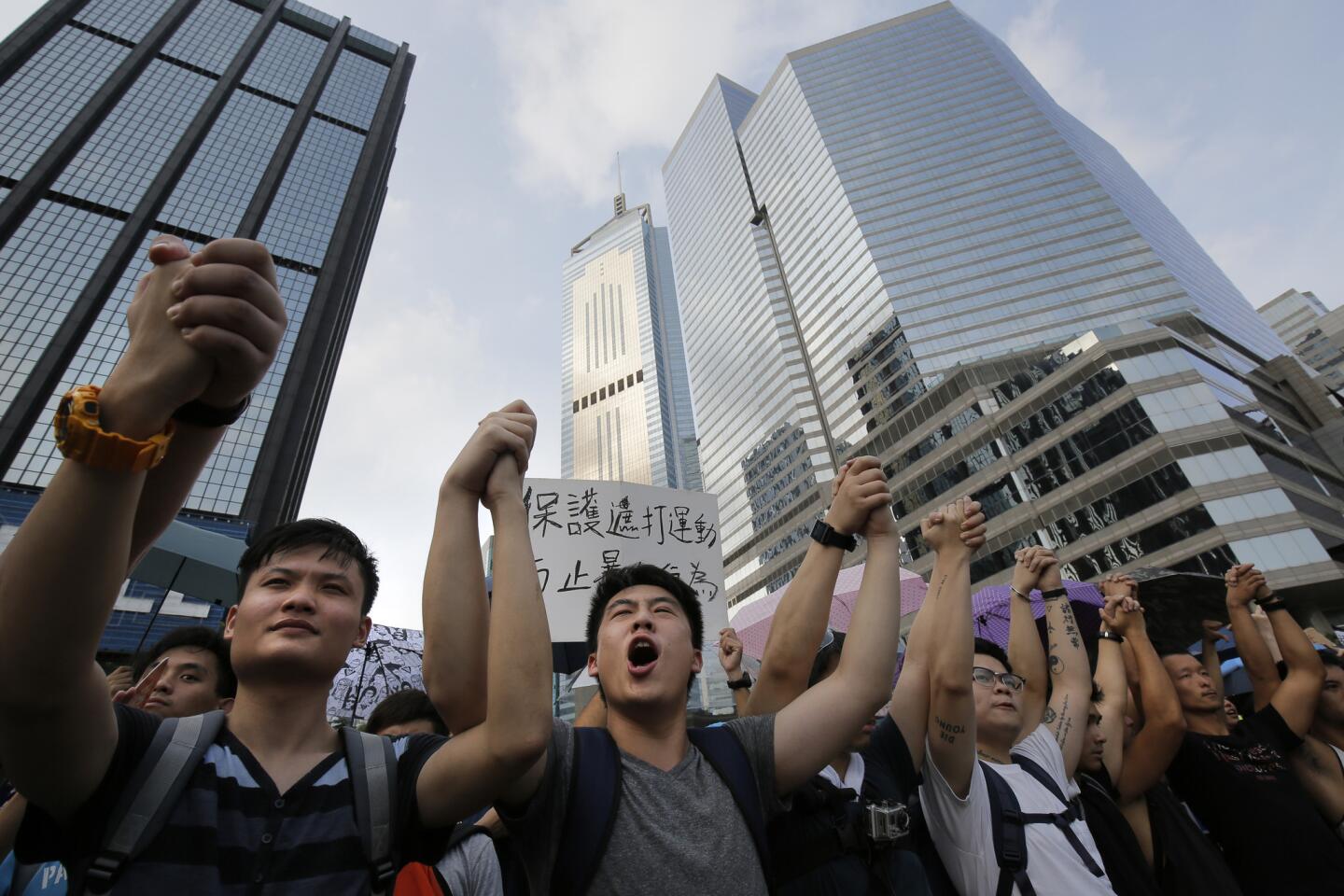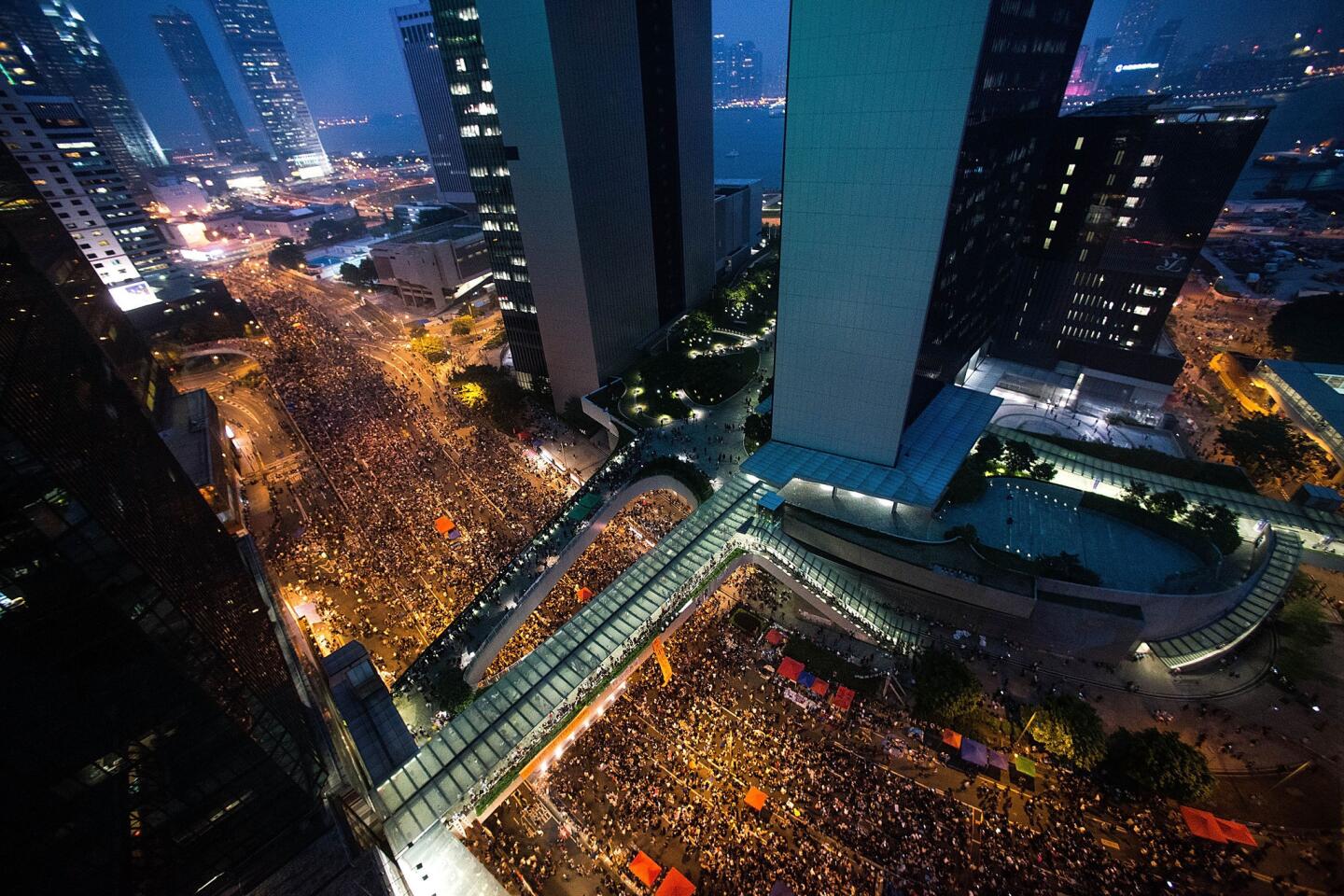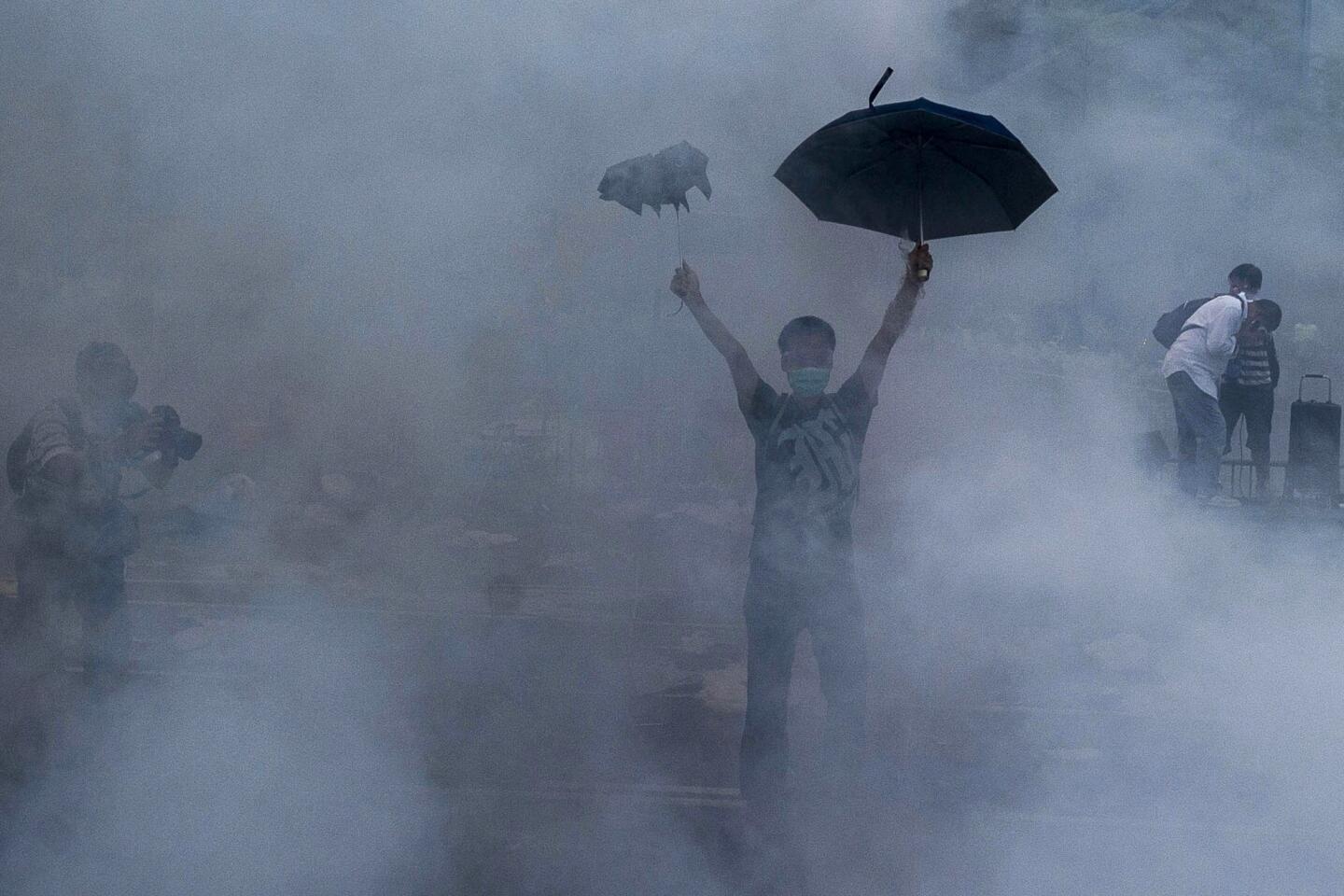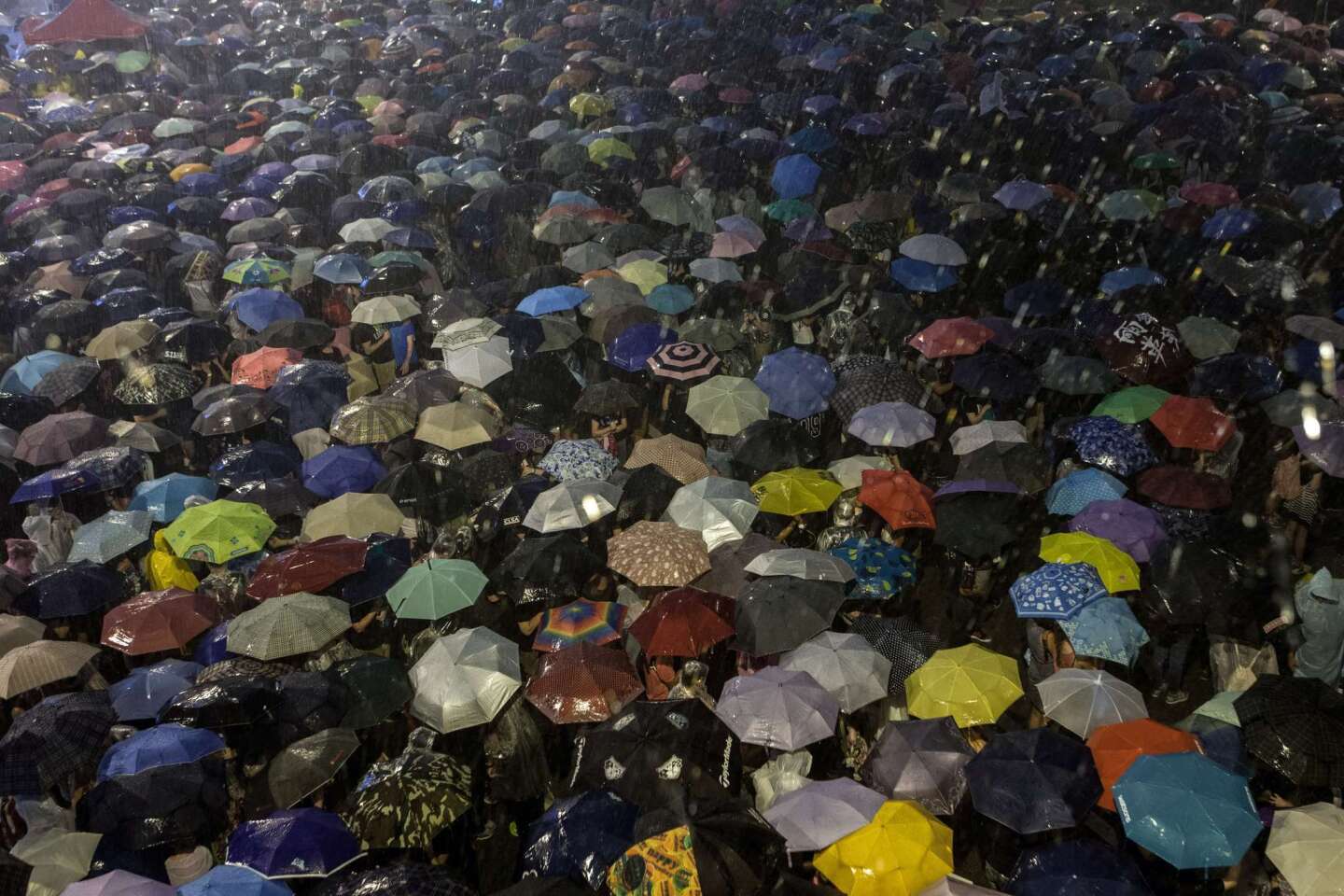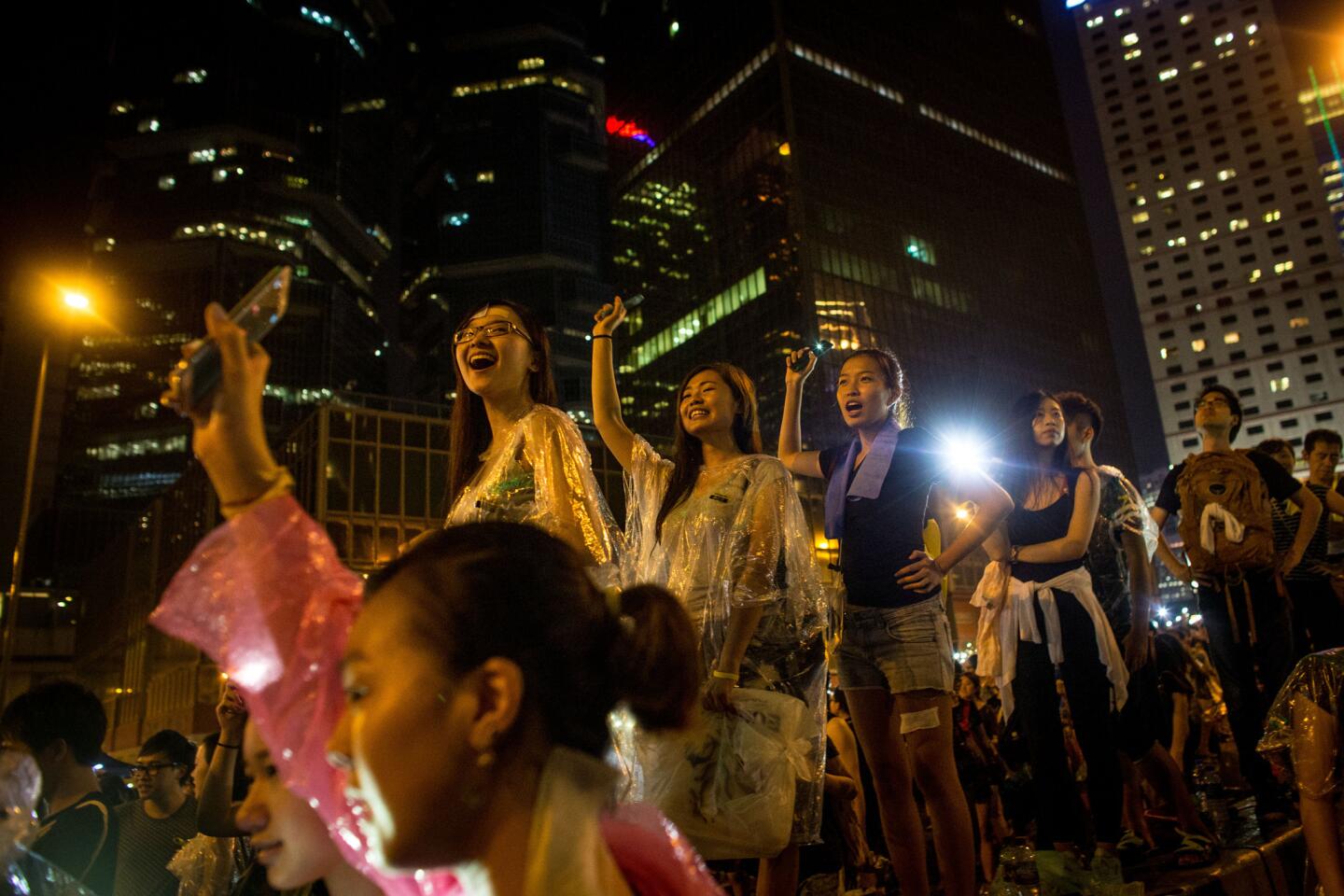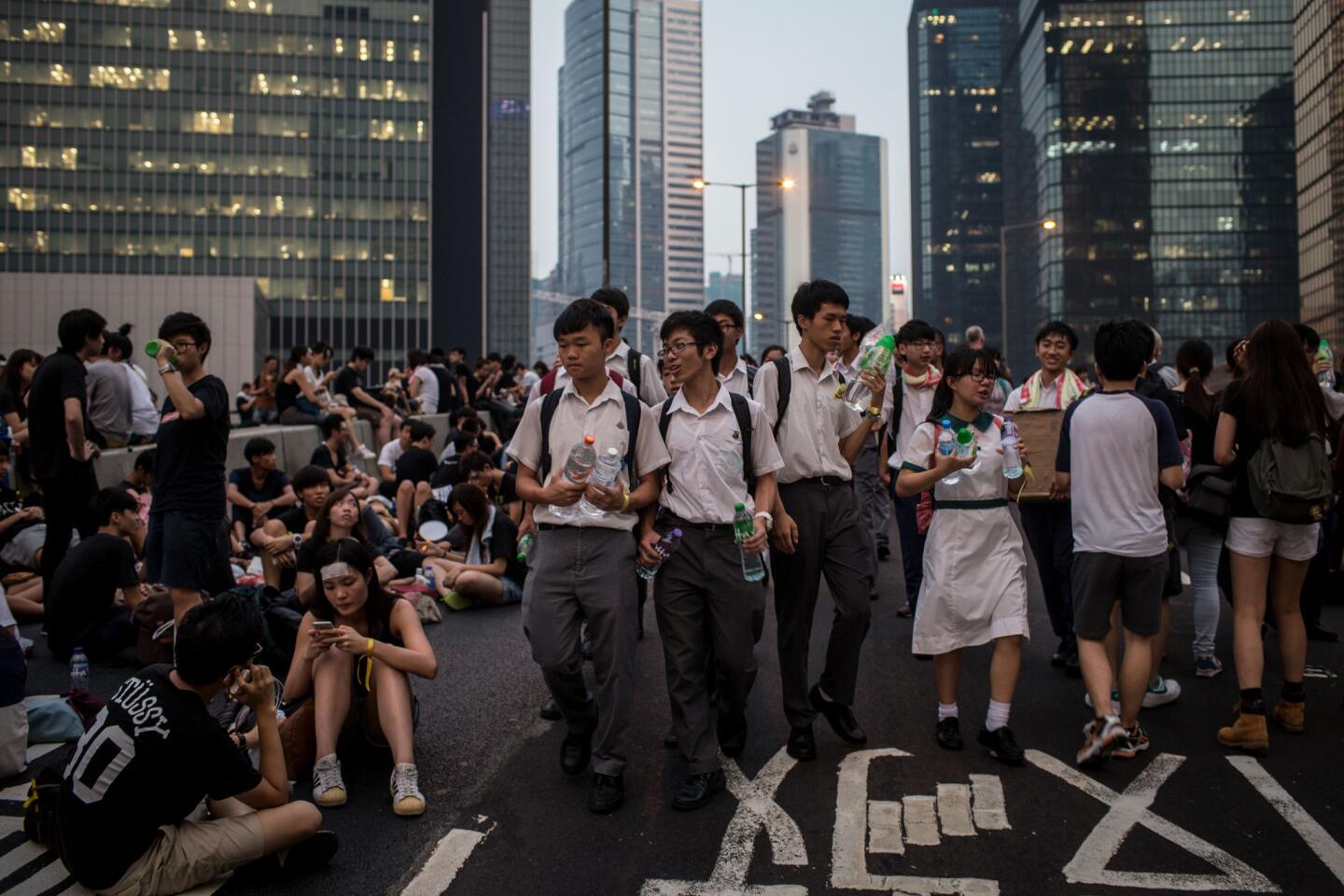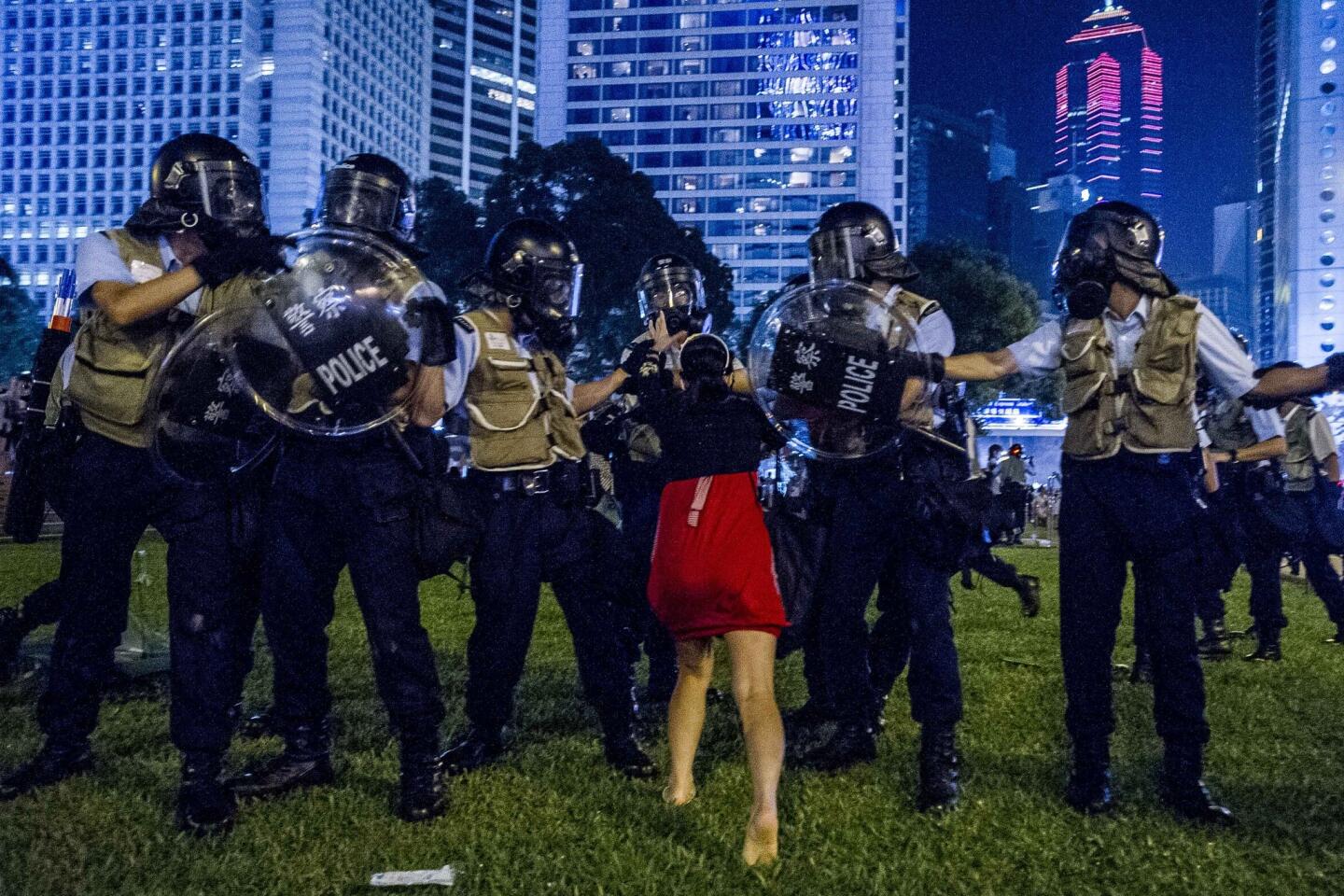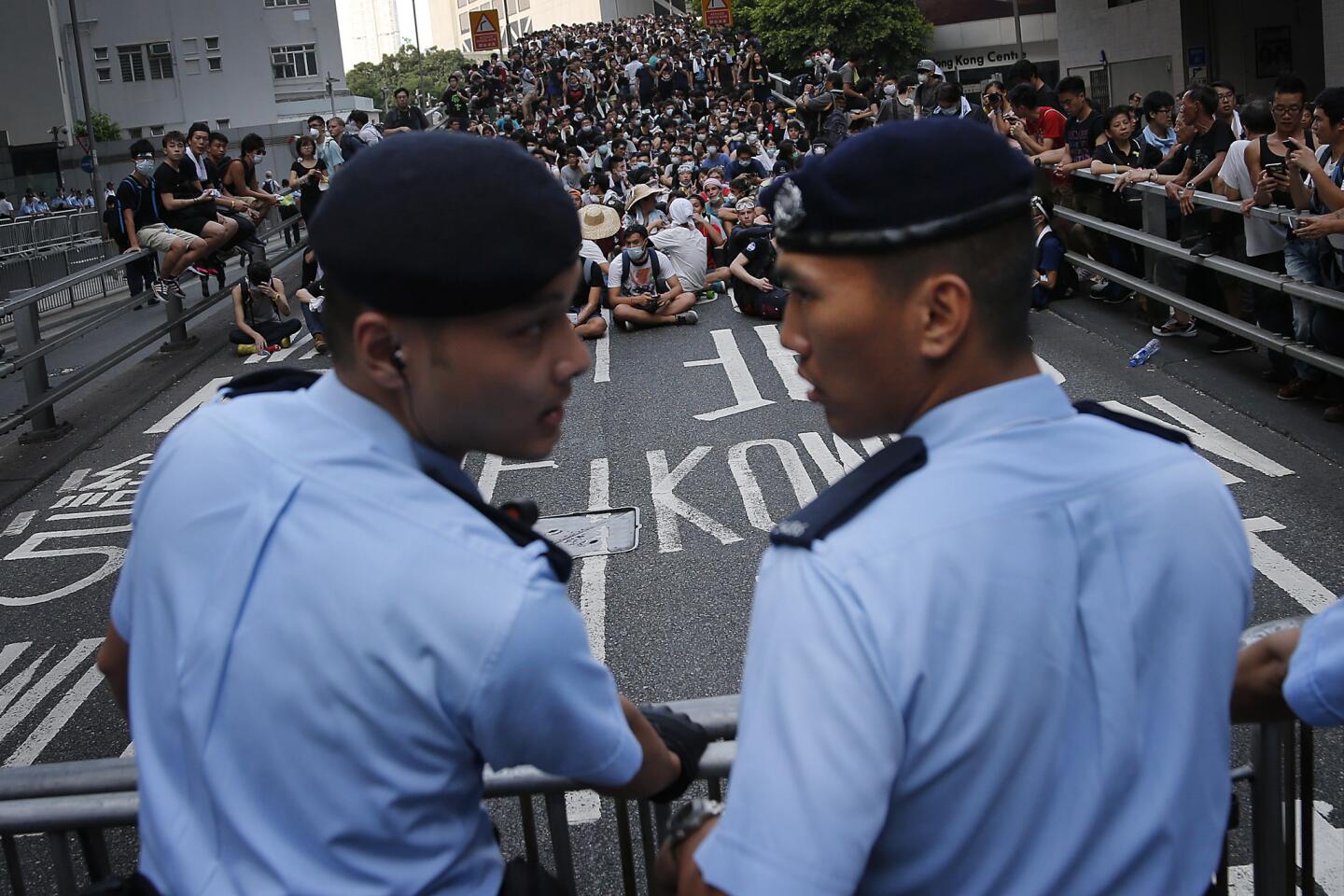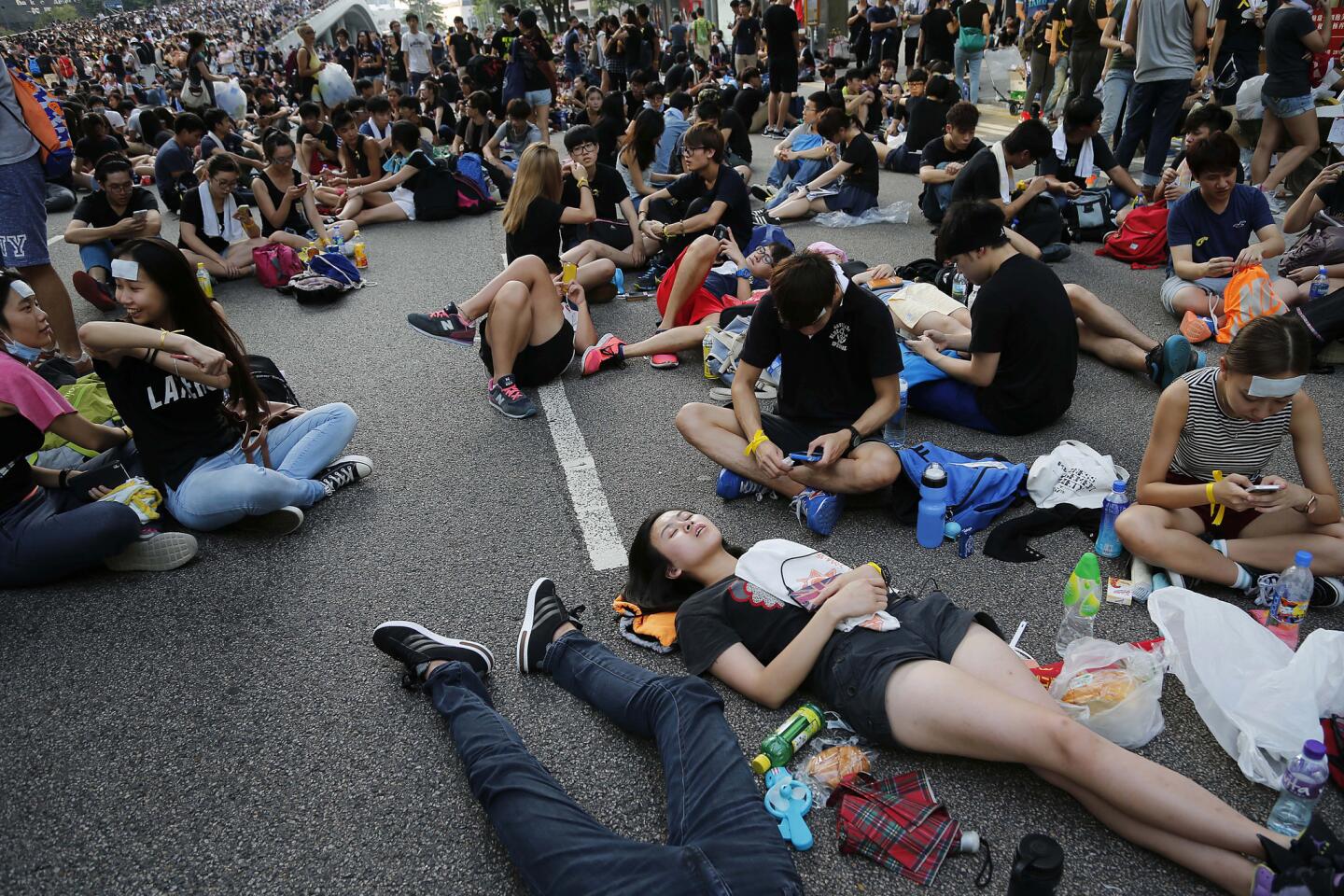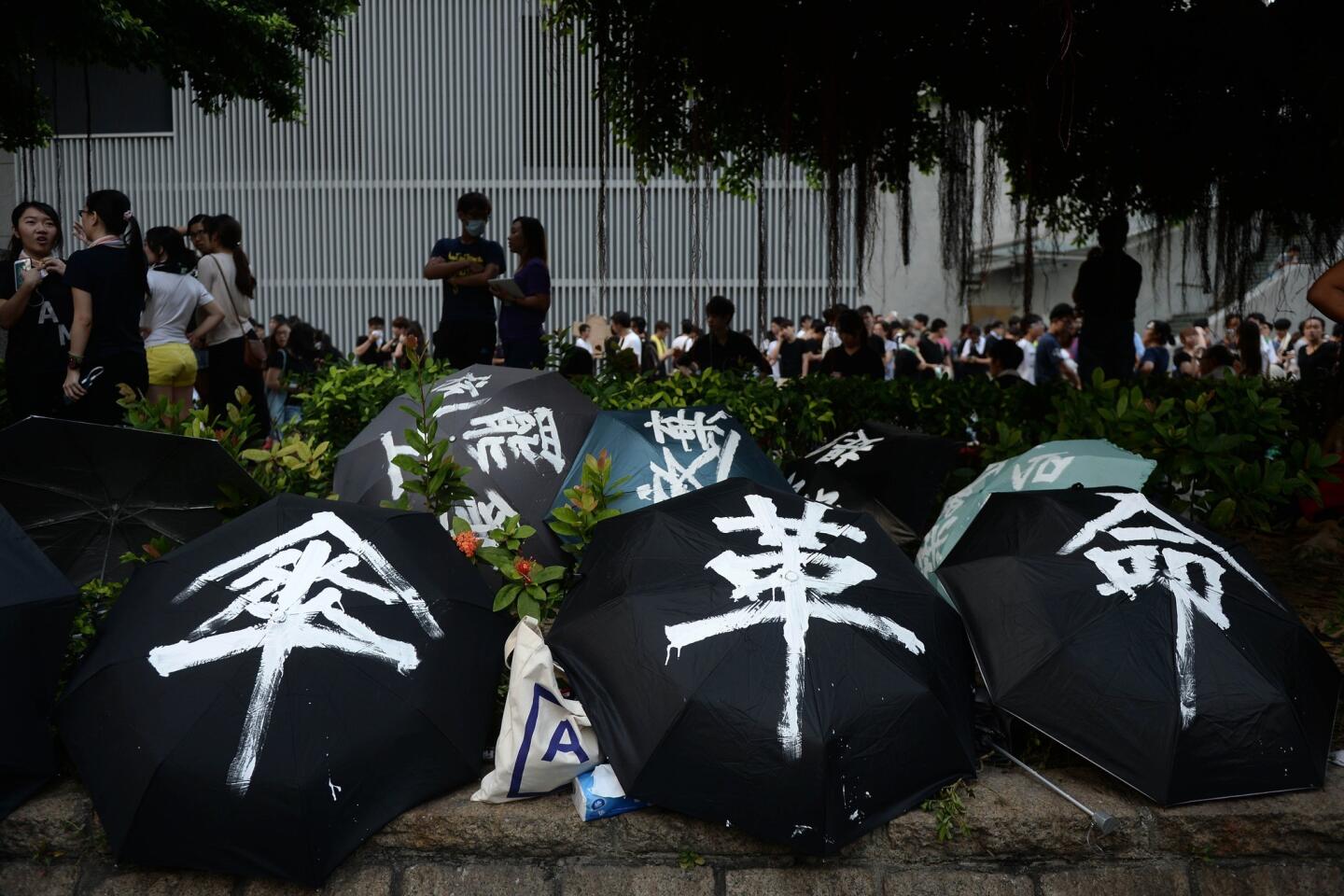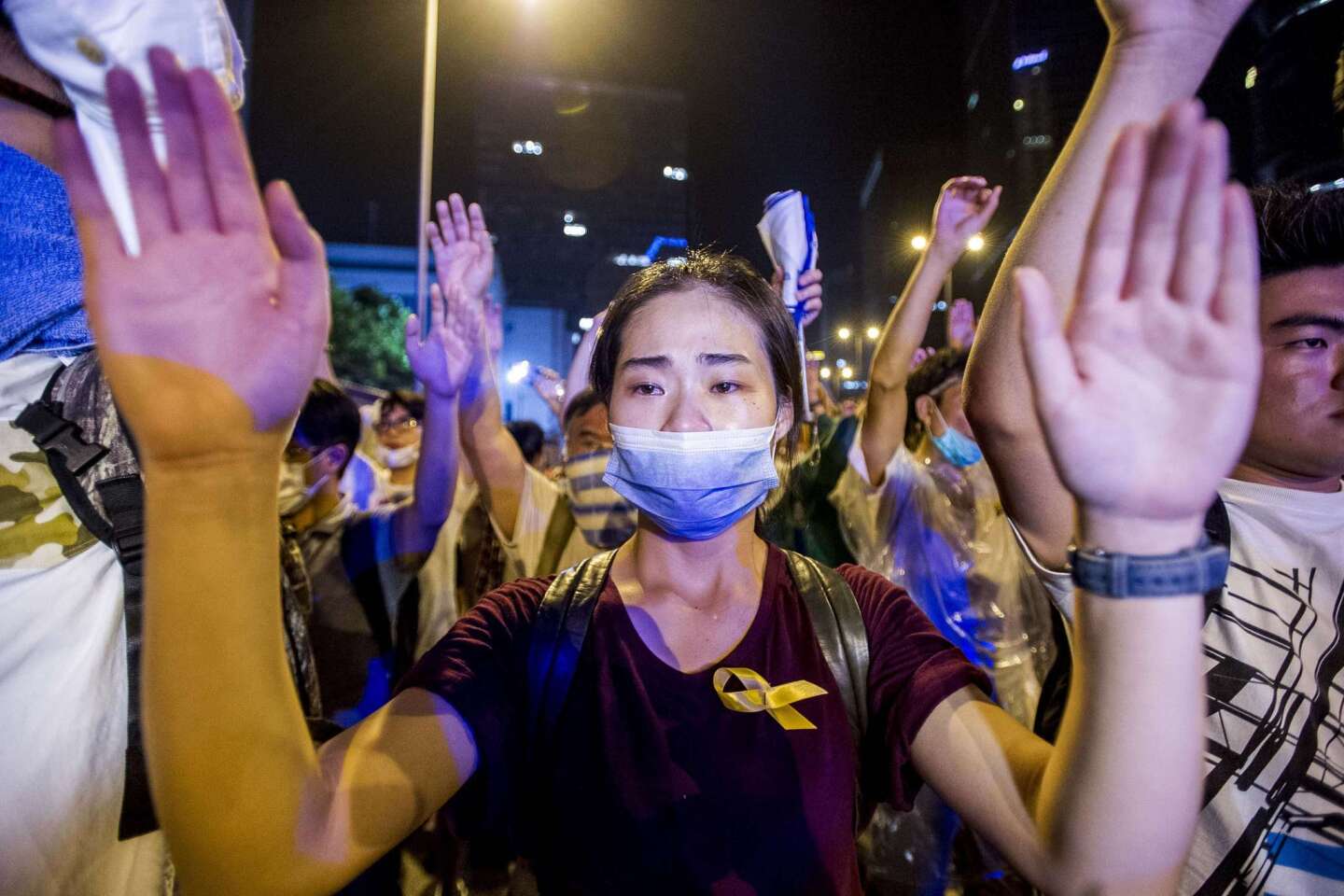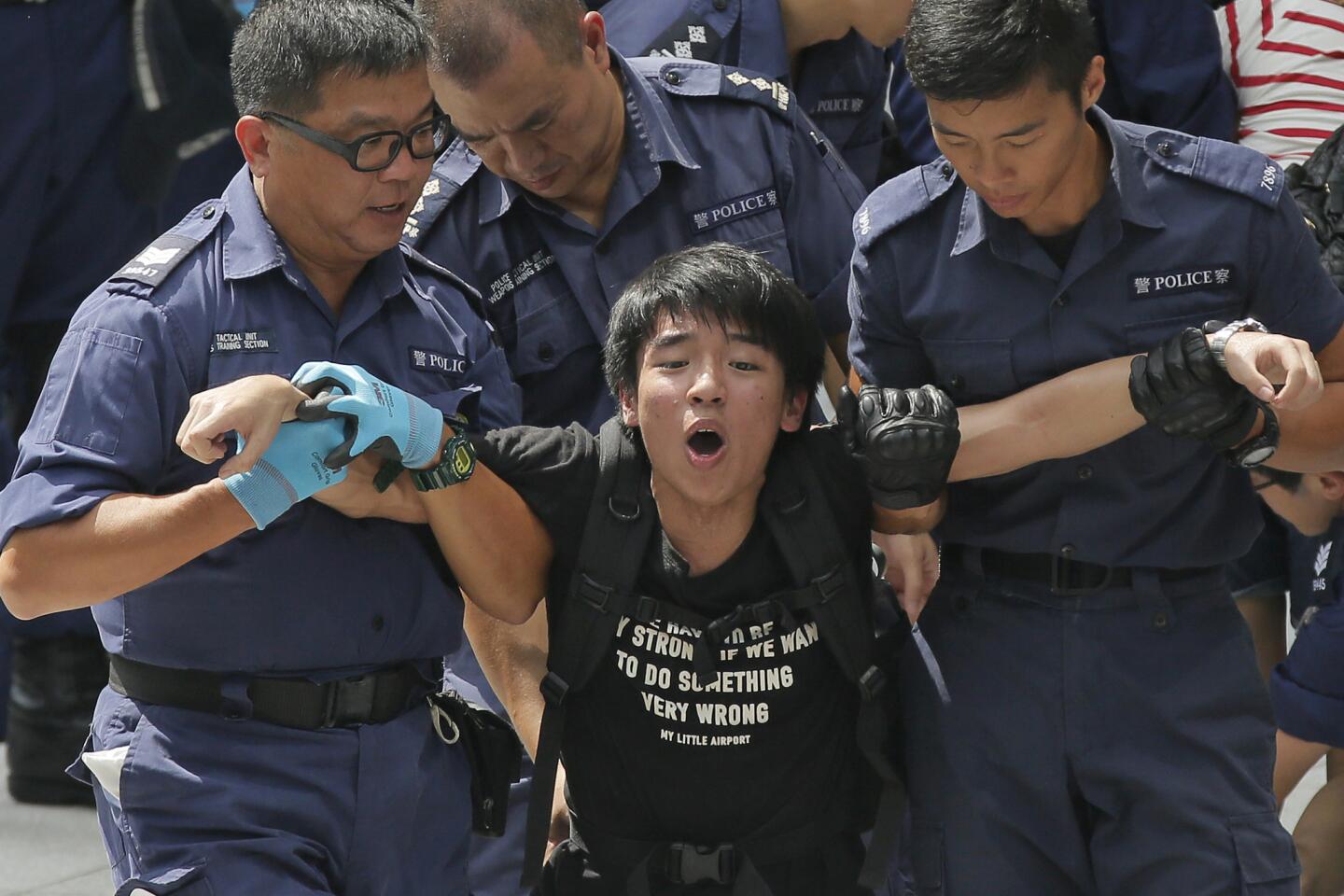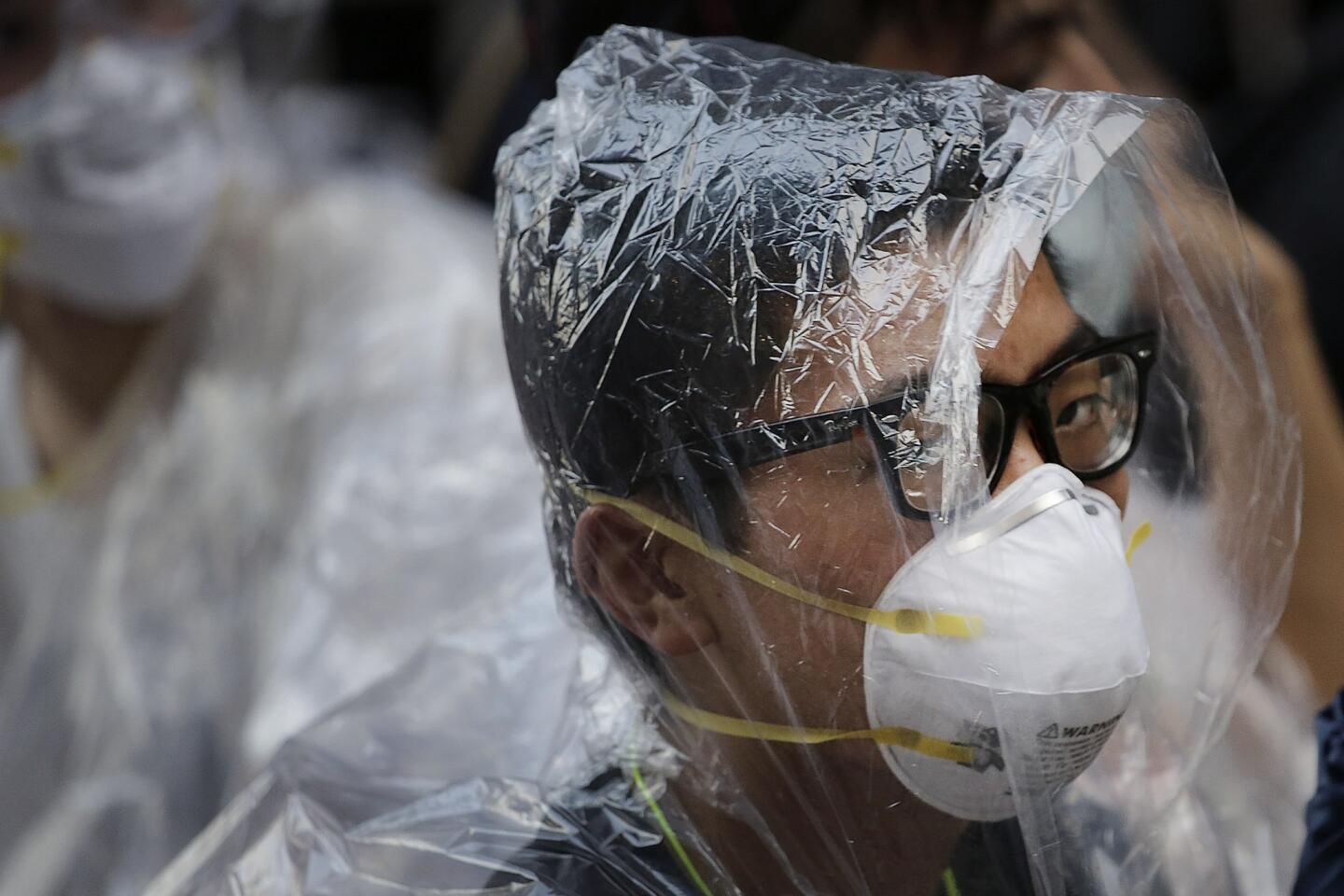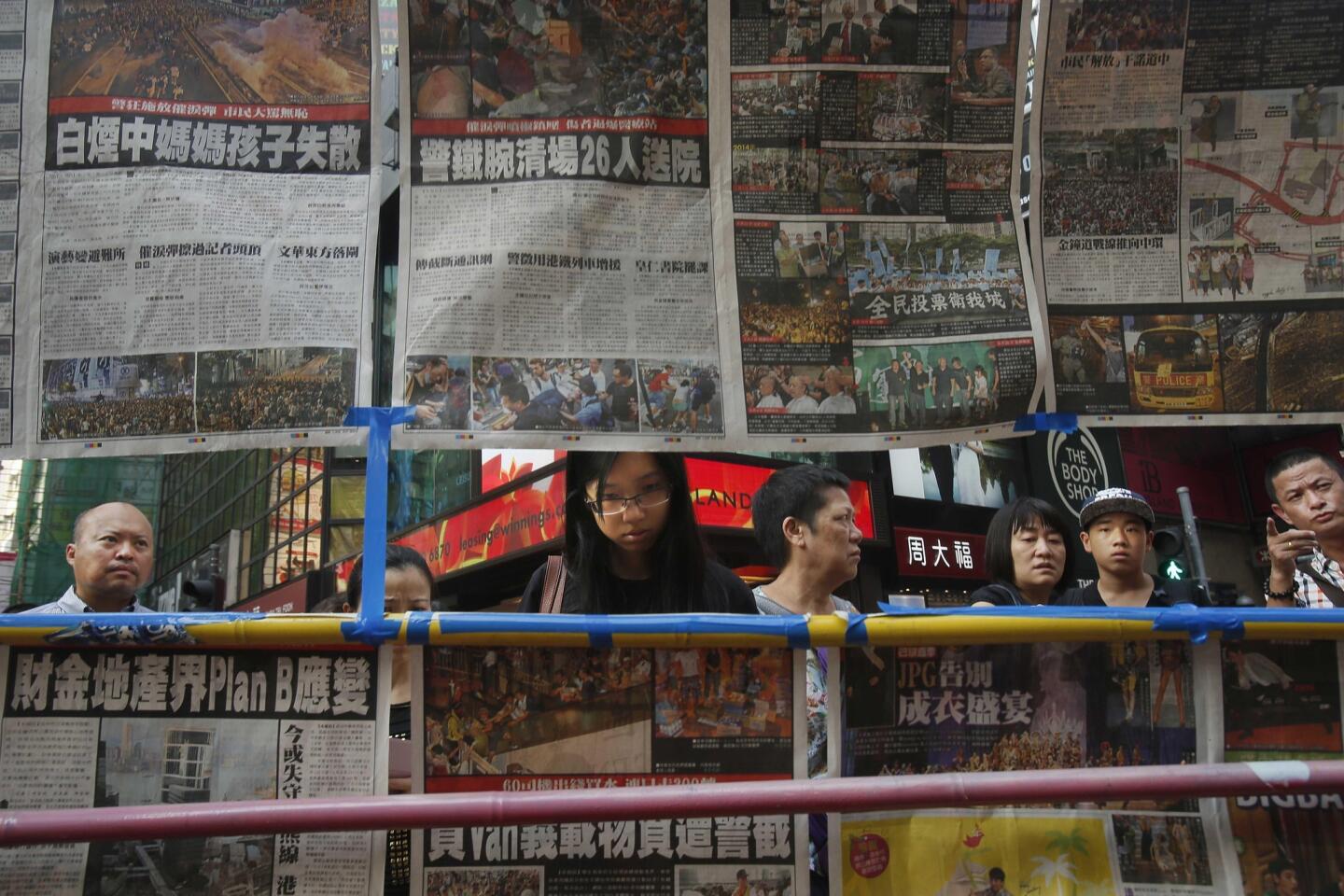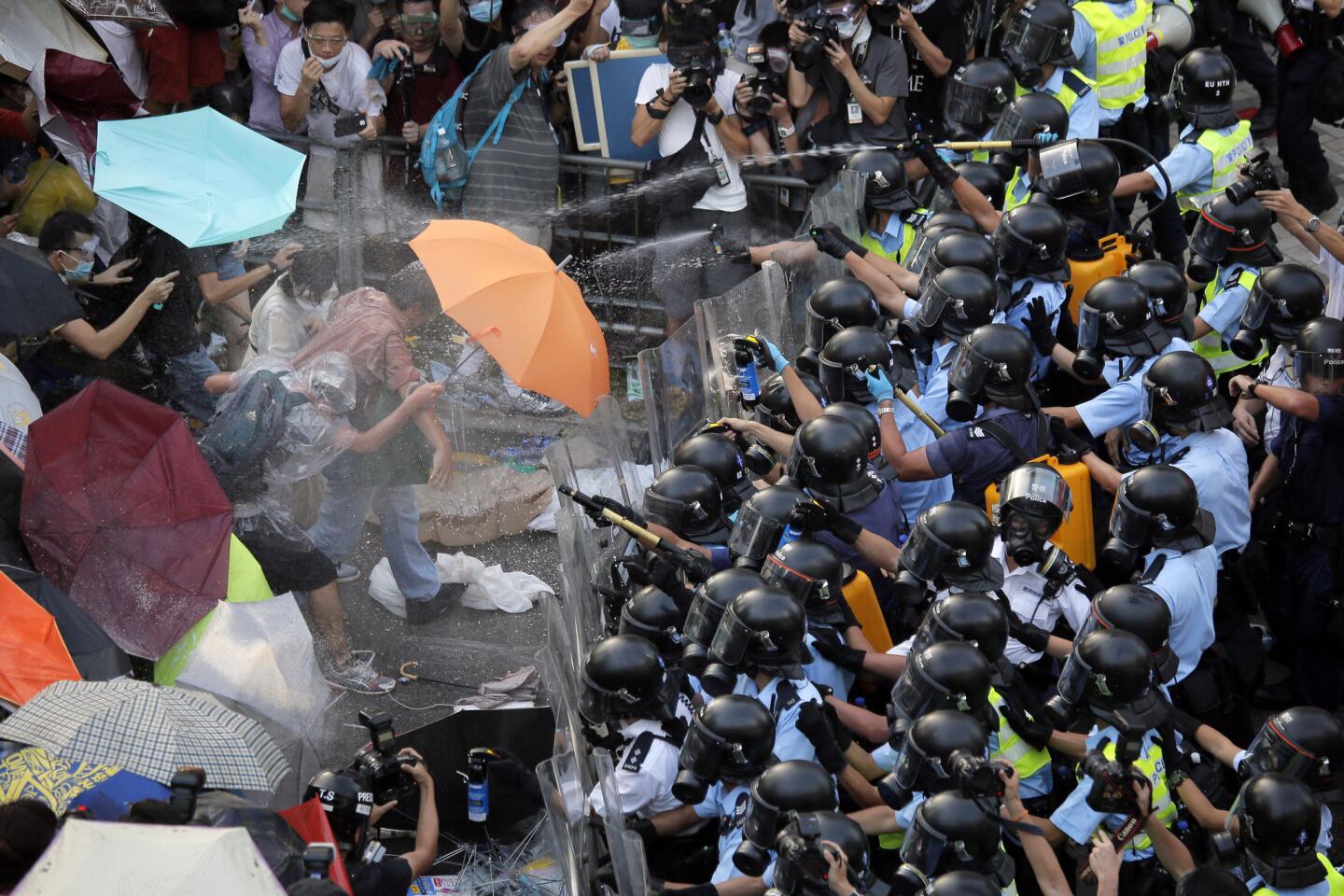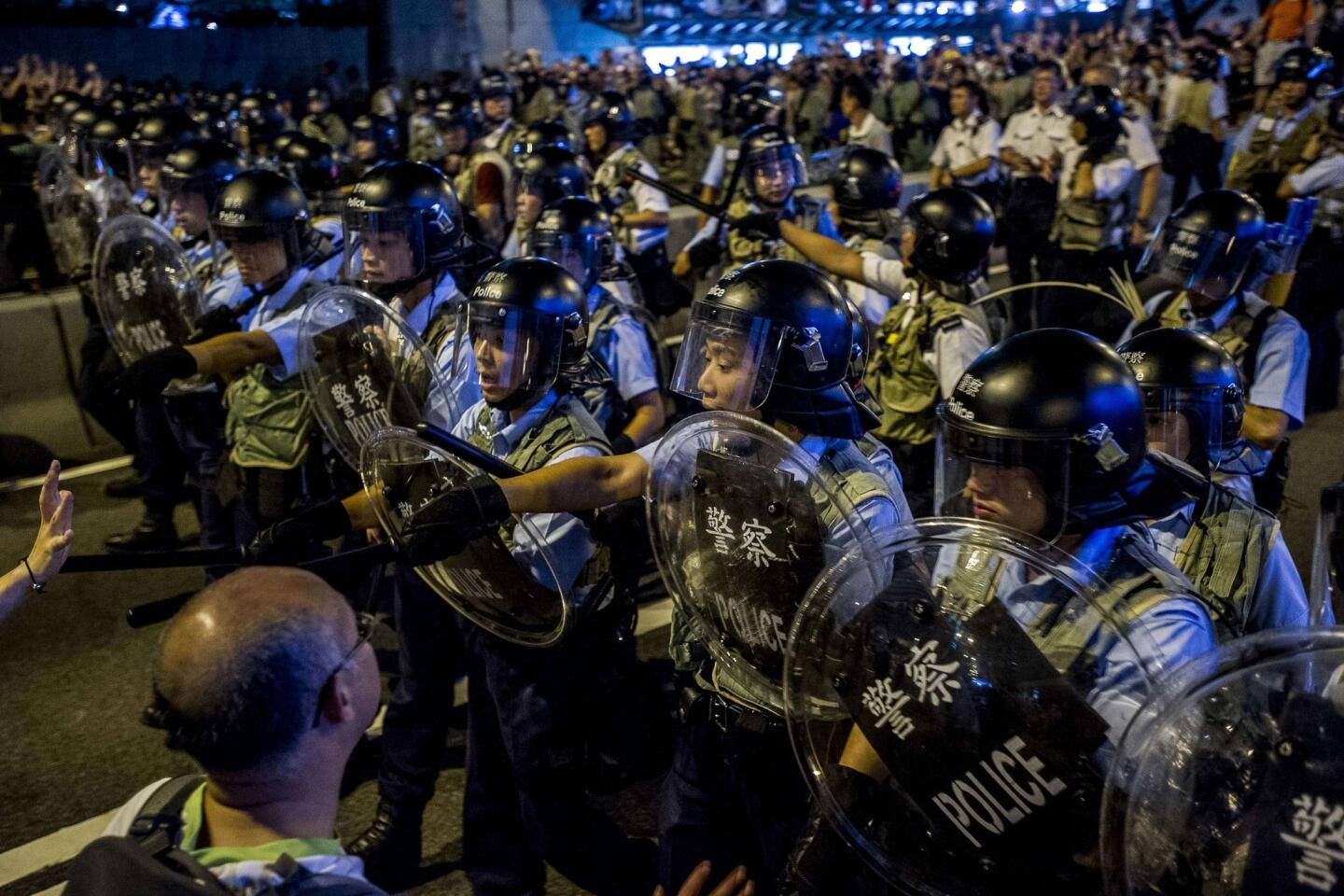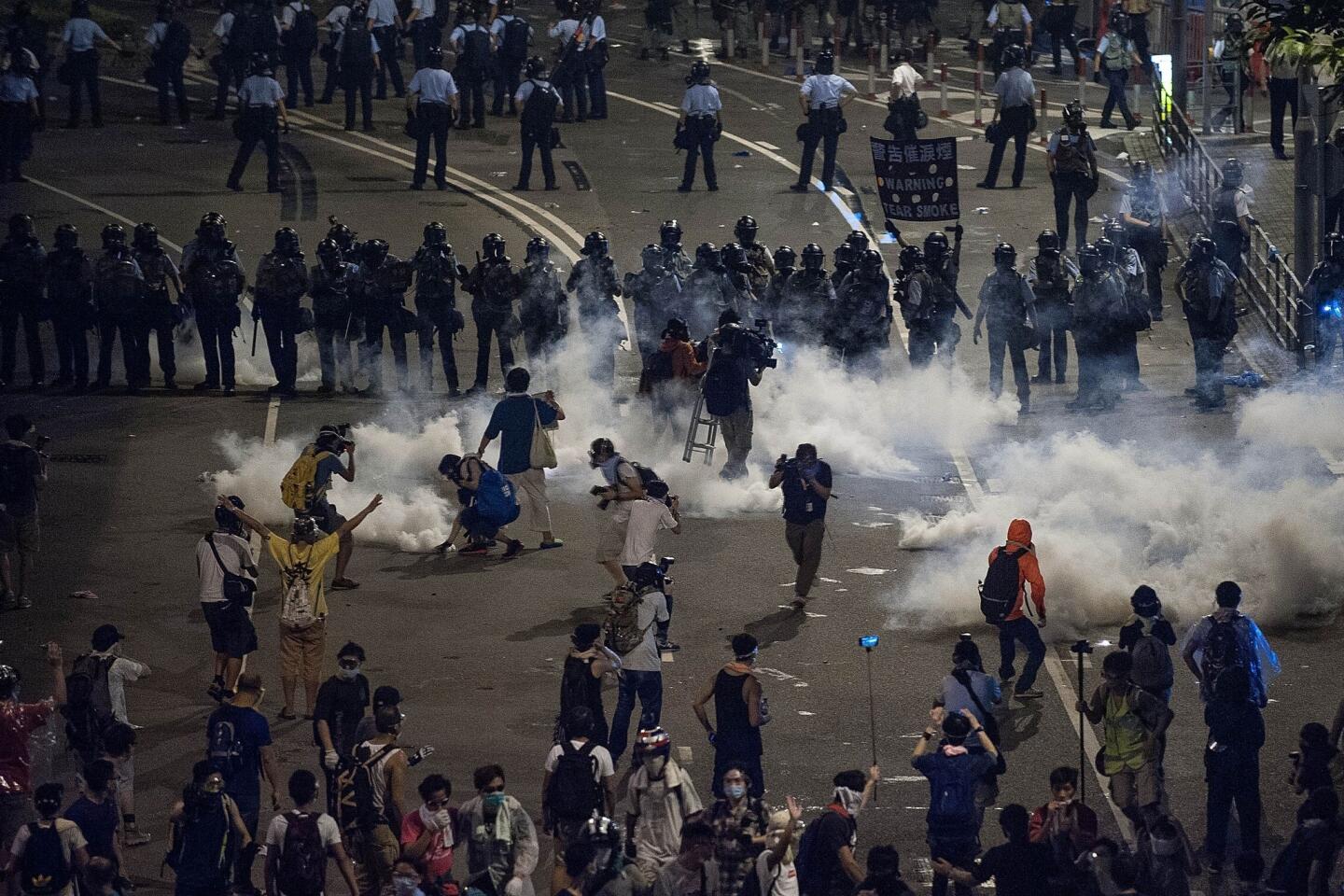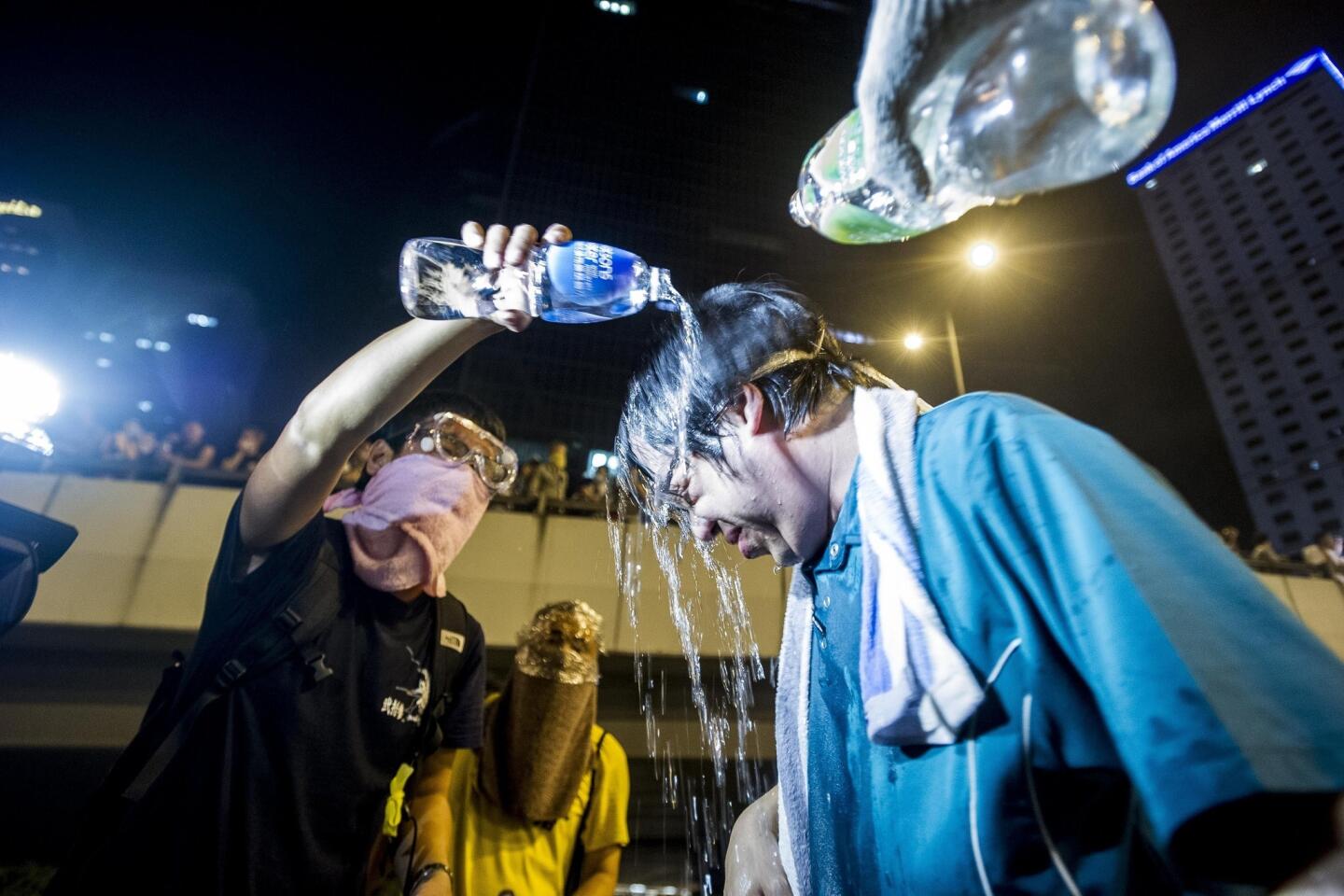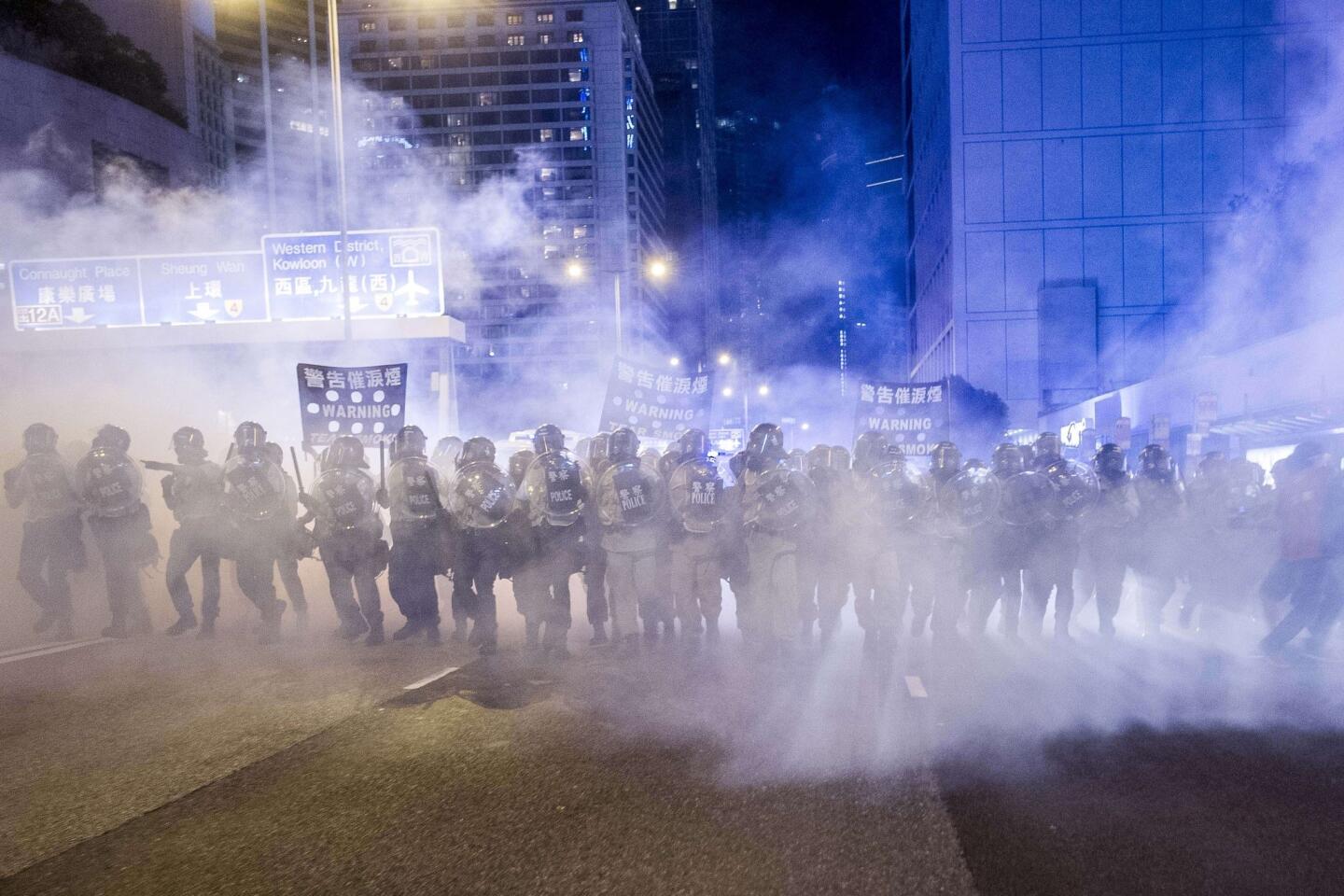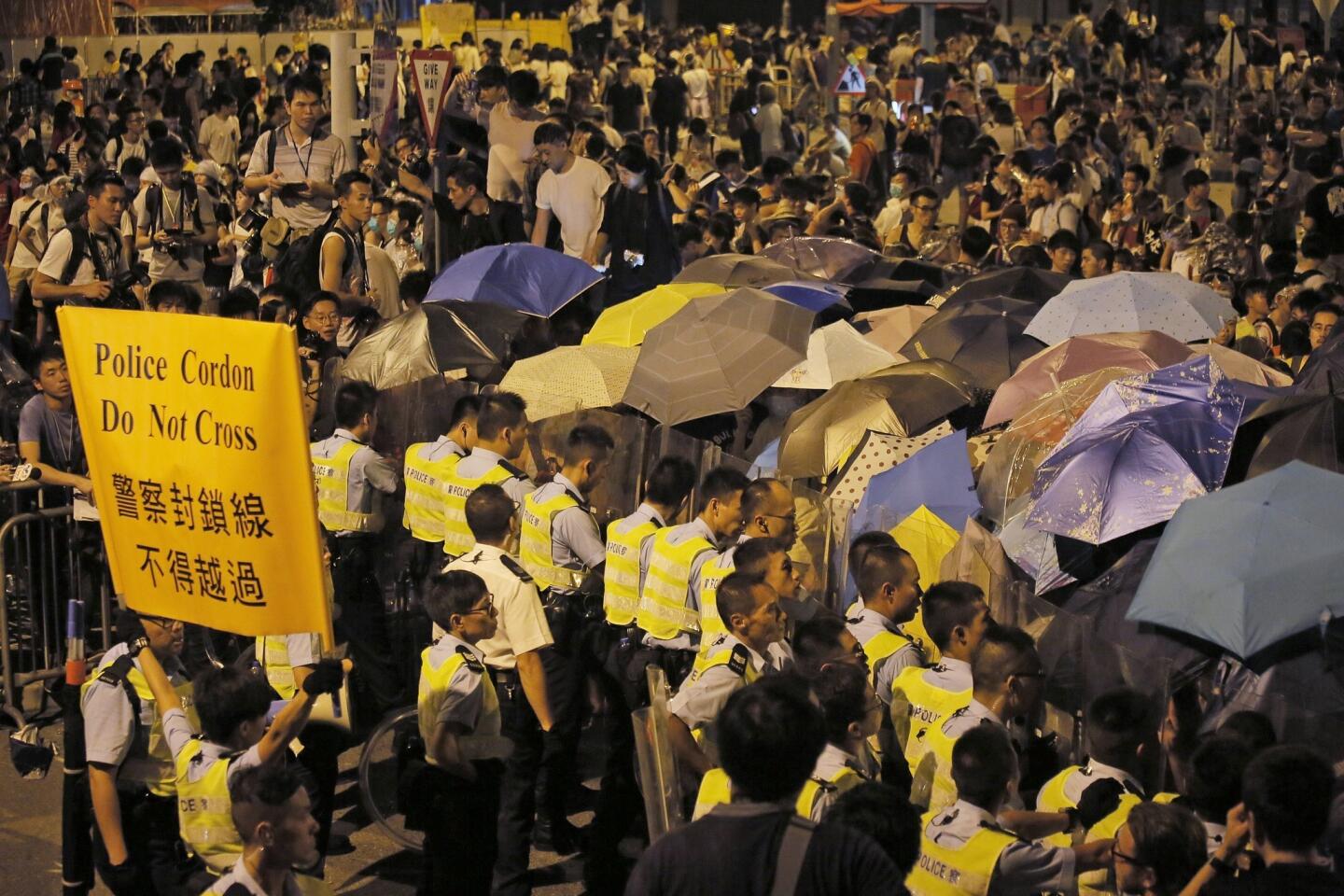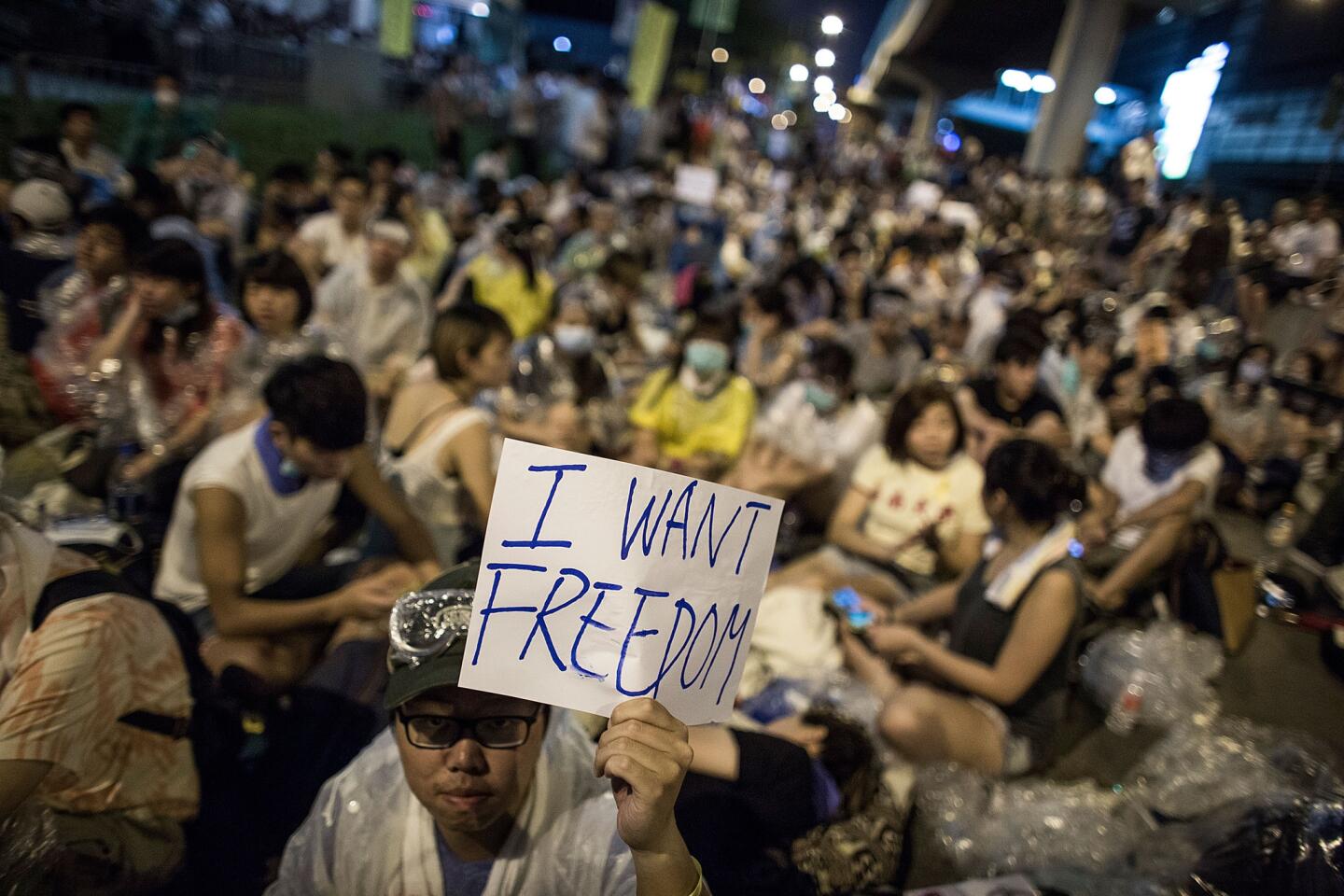Story So Far: Hong Kong protests: What you need to know
- Share via
Pro-democracy demonstrations have roiled Hong Kong for two weeks, with thousands of protesters taking to the streets, blocking traffic and shutting some schools and businesses. The protests turned violent on Oct. 3, as opponents of the movement confronted protesters, and police struggled to keep the conflict from devolving into an all-out riot. This week, there seemed to be no end in sight, as government leaders agreed to talks with protest leaders, and then canceled them two days later. Here's what you need to know about what's been going on.
When did these protests start?
The unrest began Sept. 26, when about 100 pro-democracy protesters scaled fences and attempted to occupy part of a public plaza at the main government compound in Hong Kong.
They were cheered on by more than 1,000 supporters. Police moved in quickly, using pepper spray to scatter the crowd.
The storming of the plaza occurred after university students in Hong Kong staged a weeklong boycott of classes to protest new election rules.
Why are they protesting?
Protest leaders have issued a set of demands, including the repeal of new election rules, the resignation of Hong Kong Chief Executive Leung Chun-ying, and the reopening of the public plaza, which had been fenced off after another recent protest.
Since Britain handed over control to China in 1997, Hong Kong's government has worked under a framework known as "one country, two systems," which gave the territory a greater degree of autonomy than elsewhere in China, allowing for free speech and an international financial system.
One of the stipulations of the transfer was that Hong Kong move toward a system of "universal suffrage upon nomination by a broadly representative nominating committee in accordance with democratic procedures."
But the chief executive, the territory’s top official, is currently chosen by a committee of 1,200 people, most of whom are friendly to interests of the Chinese government in Beijing.
Authorities have said voters will be allowed to choose the chief executive starting in 2017, but the new election rules mean that voters will be able to choose only from a few Beijing-approved candidates. Protesters have decried this as “fake democracy” and say they want a more open process.
Who are the protesters?
Many of the protesters say they have no leader, but there are three main groups that have been organizing rallies in the streets: The Hong Kong Federation of Students, which is an umbrella group of student unions for the city’s higher education institutions, Scholarism and Occupy Central With Love and Peace.
The HKFS is the oldest and most established of the three groups. Occupy Central is led by two professors and a pastor, and Scholarism includes many high school students, led by 17-year-old Joshua Wong.
Labor and women’s groups have also joined in.
How many people have protested?
Tens of thousands of people have taken to the streets to protest, with some reports saying as many as 100,000 joined at one point.
During the first weekend of protests, 78 people were arrested and more than 100 – including six police officers – were wounded.
In a news conference on Oct. 5, police said they had arrested 30 more people for offenses that included possession of weapons, sexual assault and fighting. As many as 10 journalists were reportedly injured, and 27 police officers had been injured.
What’s it been like at the protest sites?
Protesters have streamed into the city’s major thoroughfares, bringing traffic to a standstill and leaving some public buses stuck in intersections for days.
Some schools and businesses were closed during the first week of protests, and the government shut down its main office, asking civil servants to work from home or other locations.
Protesters at one point agreed to clear routes for emergency vehicles, but rejected calls from government leaders to go home.
Businesses and schools reopened this week, but many public areas remain occupied.
What has the government response been?
Chief Executive Leung Chun-ying has refused to step down. The Chinese Communist Party, which backs Leung, has denounced the rallies as illegal, and authorities have said demonstrations are being organized by “radical social activists.”
Leung previously suggested that troops from the People’s Liberation Army stationed in Hong Kong may be called in, but later said he would not deploy the soldiers.
Such a step would mark an unprecedented move by Chinese government authorities to intervene in Hong Kong affairs.
Have the protests been violent?
The pro-democracy protesters have remained overwhelmingly nonviolent.
But police in riot gear have fired tear gas and pepper spray during the protests to disperse the crowd.
And on Friday, Oct. 3, dozens of men opposed to the protests surrounded and confronted demonstrators, throwing water bottles and punching protesters as they urged police to clear the streets.
It’s not clear whether the opposition was a spontaneous response by frustrated residents, or, as some have suggested, the work of “hired thugs” or of people from mainland China.
Leung said the situation was “approaching a state of anarchy,” but protesters once again ignored his pleas that they return home.
Are the protests going to stop anytime soon?
Leung offered to talks with the student groups, and on Thursday, Oct. 2, the Hong Kong Federation of Students said they had agreed to meet with the government representative, Carrie Lam.
But after fresh violence erupted Oct. 3, the group canceled the talks, saying the government must protect protesters from organized attacks.
This week, the prospect of restarting talks looked promising, with progress reported in informal meetings between the Federation and government officials occurring throughout the week. Formal talks were scheduled for Oct. 10, but government leaders canceled, complaining that students continued to demand free elections and refused to leave occupied areas of the city.
On Oct. 10, tens of thousands of demonstrators took to the streets once again, reinvigorated by the government's actions.
Related
For more breaking news, follow me @cmaiduc
Times staff writers Julie Makinen and David Pierson and special correspondent Violet Law contributed to this report.
Sign up for Essential California
The most important California stories and recommendations in your inbox every morning.
You may occasionally receive promotional content from the Los Angeles Times.
